Get Started with LuxLinkUpdated 4 months ago
To use LuxLink you will need:
A) A valid LuxLink subscription or Demo
B) A projector and a camera
C) A computer (preferably a laptop) with an internet connection
Part 1: Setup a LuxLink Projector in the MyLuxedo Portal
The very first step is to register a new LuxLink projector within the MyLuxedo Portal.
1. Log into the MyLuxedo portal on the computer you will be using for LuxLink.
2. Once logged into the portal, click on “Projectors” in the left-hand column list
3. Click "Register Projector"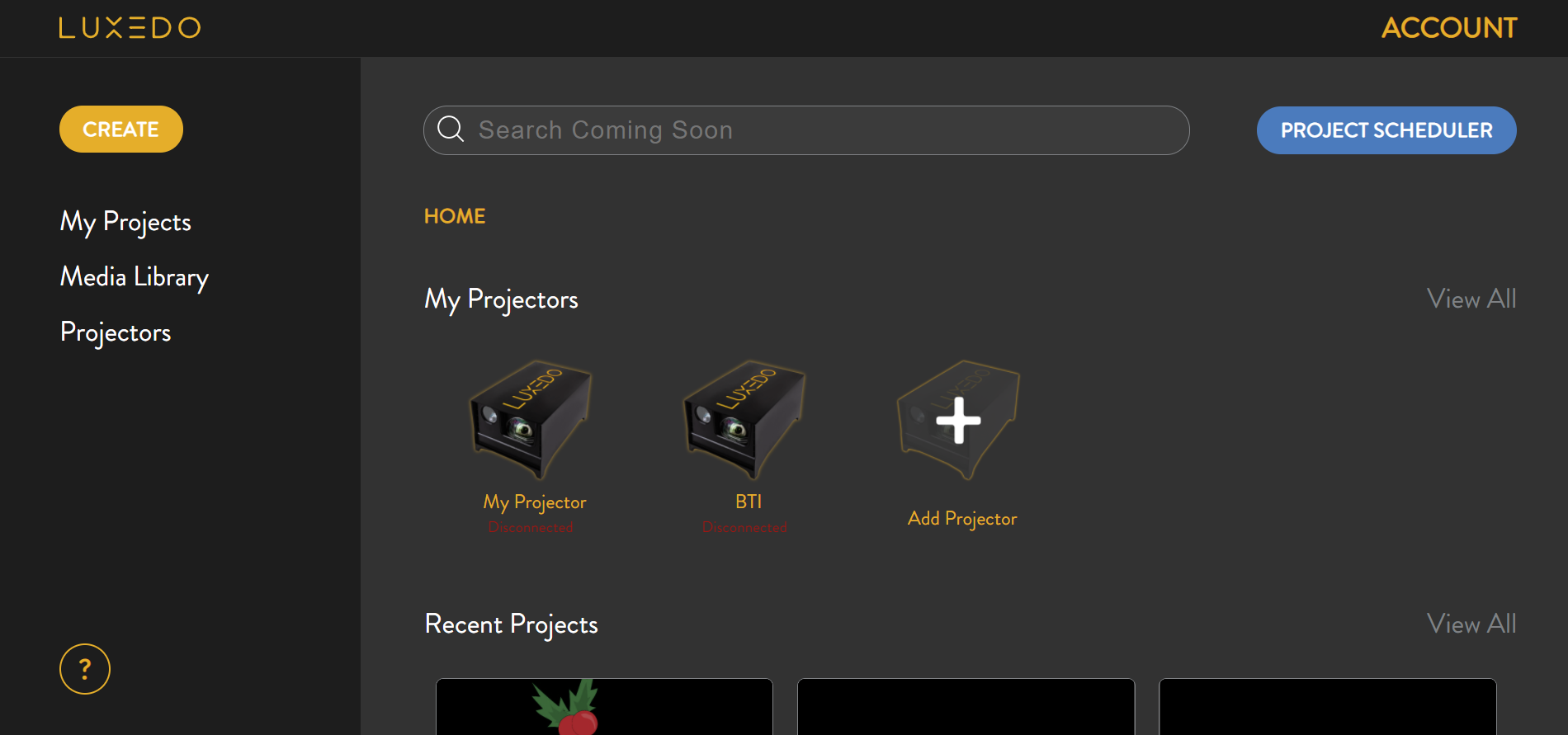
4. Click "Use my own projector and camera with LuxLink"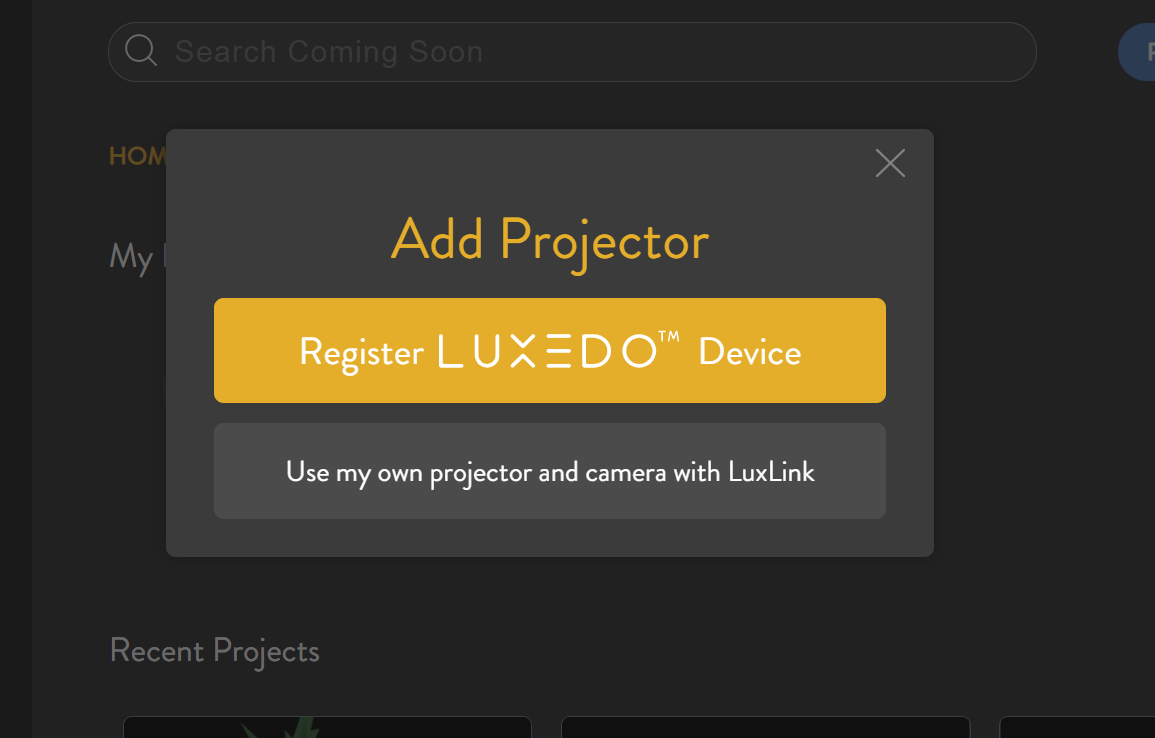
5. Give your LuxLink projector a name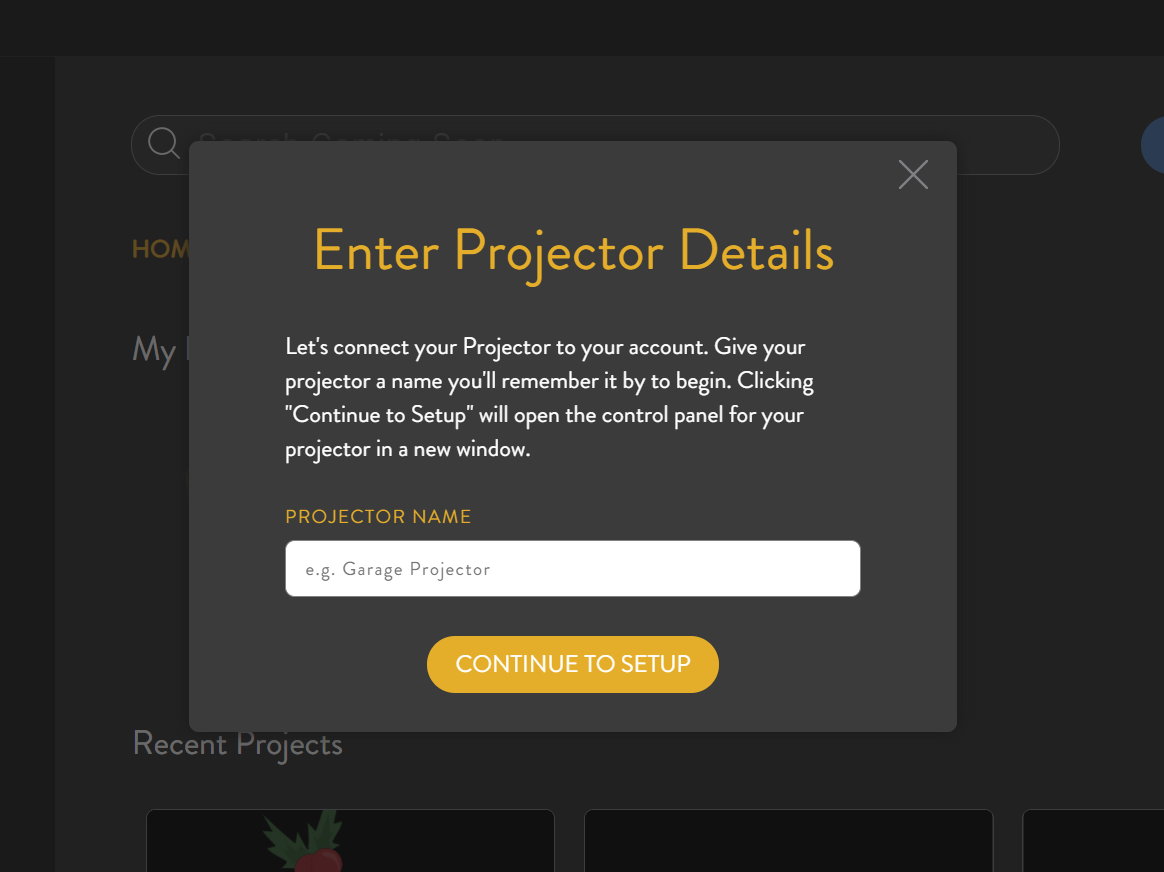
Your LuxLink projector is now registered! If you click 'CONTINUE TO SETUP' a new tab will open up which will allow you to connect your projector and camera together with our software.
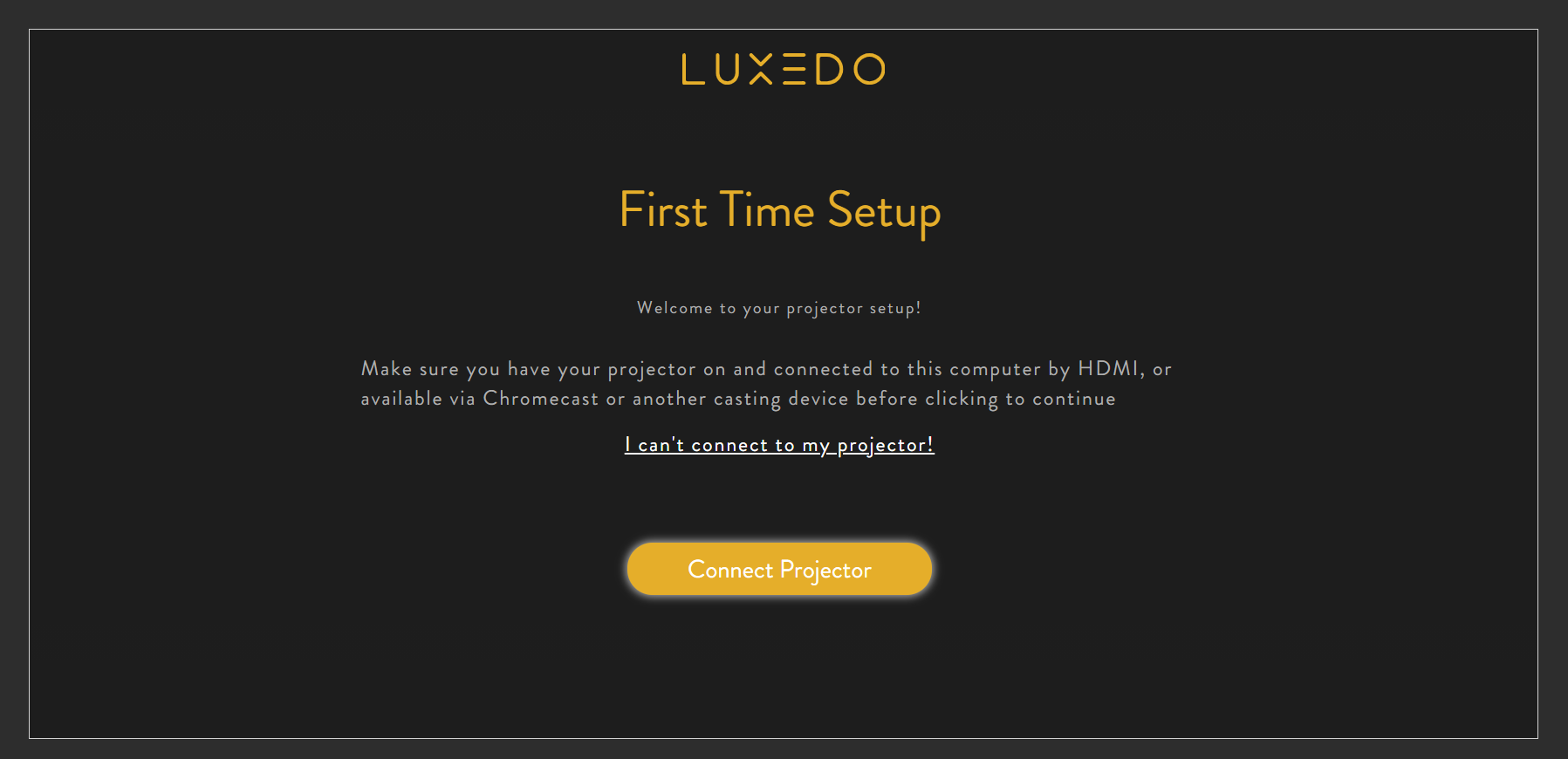
At this point, go ahead and connect your camera and projector to the computer you are using.
Connecting A Projector
There are two ways to connect a projector to your computer. You may choose one or the other. Make sure the projector is powered on before proceeding.
A) With an HDMI (Or Similar) Cable
The most straightforward way to connect a projector to a laptop is to simply attach it as a 'second monitor'. This can be done with any sort of video-transfer cable (HDMI, DisplayPort, DVI, USB-C, etc) depending on what sort of ports your projector and computer have. For this tutorial we will be using HDMI.
Simply connect the computer to the projector as shown below:
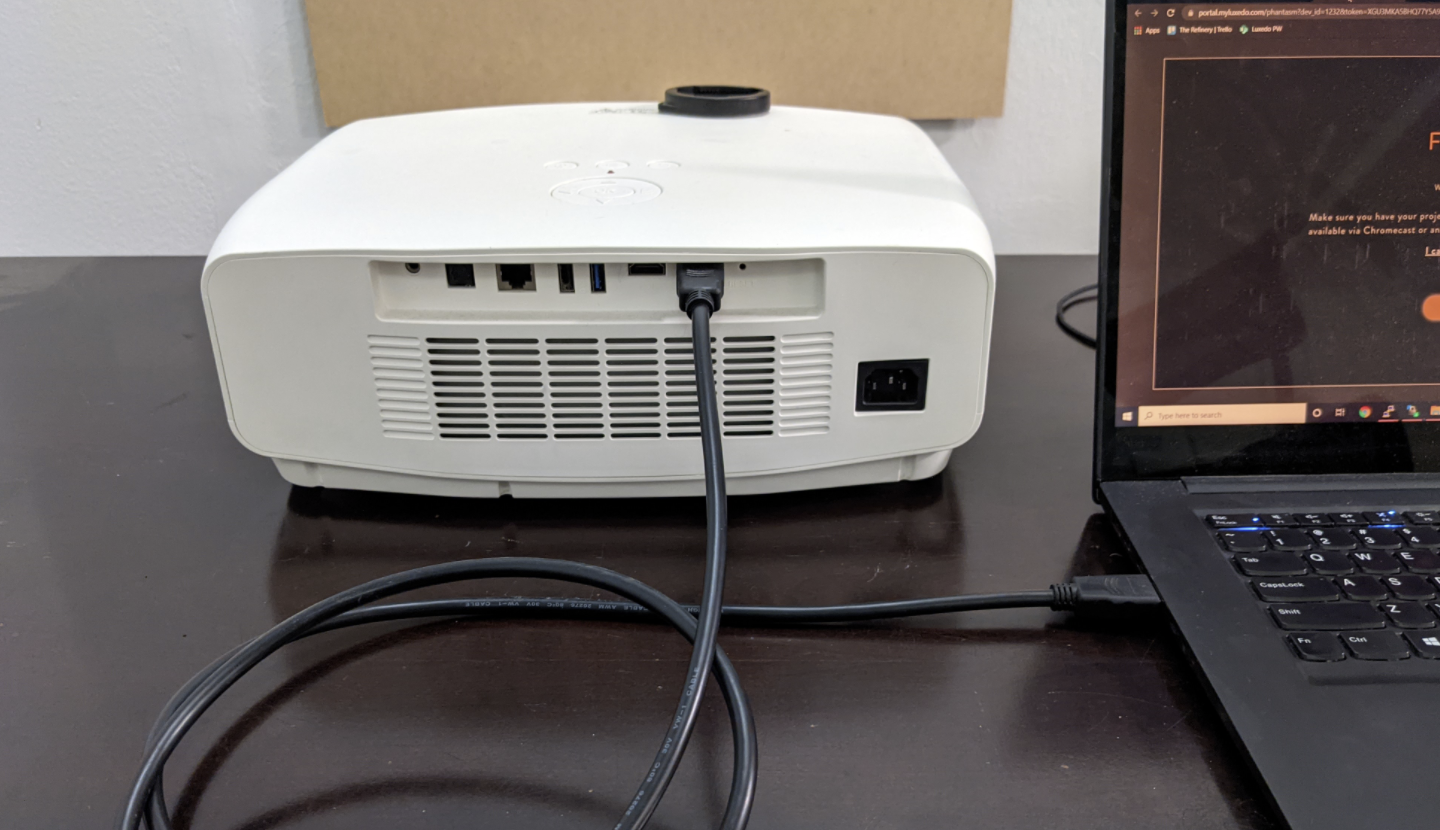
The computer should pick the projector up as a second display. Put the 'second display' into 'Extended Mode' by pressing the Windows key and 'P' at the same time and selecting 'Extended'

Return to the LuxLink setup tab and click 'Connect Projector'. An overlay will appear in the top right which will have several options. One of them will be named Display 2 (or perhaps Display 3). Click that option.
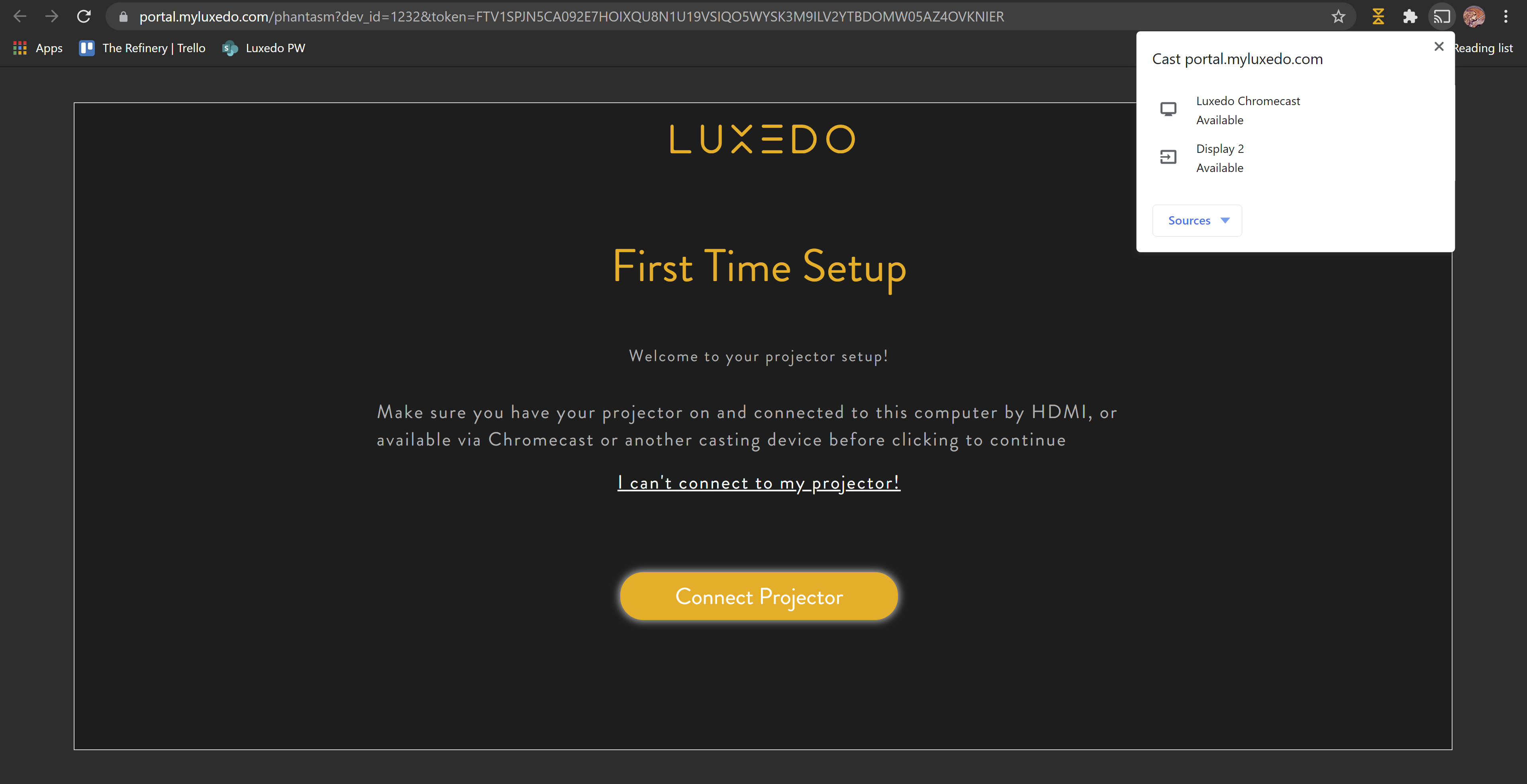
B) With a Chromecast
If you have not already, set up your Chromecast on your home network using Google's instructions.
Plug your Chromecast into your projector and power it on.
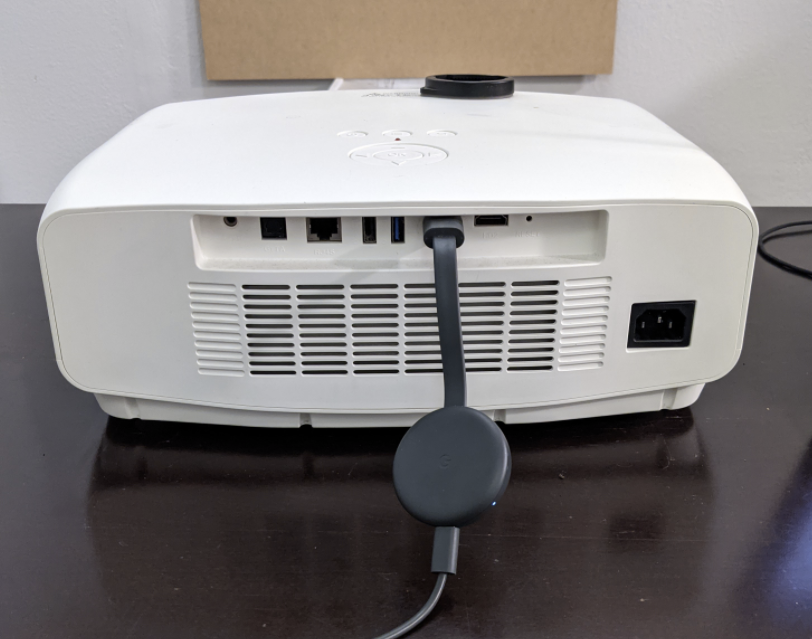
Return to the LuxLink setup tab and click 'Connect Projector'. An overlay will appear in the top right which will have your Chromecast as an option. Click that option.
NOTE: If you Chromecast does not appear in the menu, it has probably not been configured for your wireless network correctly. Don't forget that your computer must be on the same network as the Chromecast to use it!
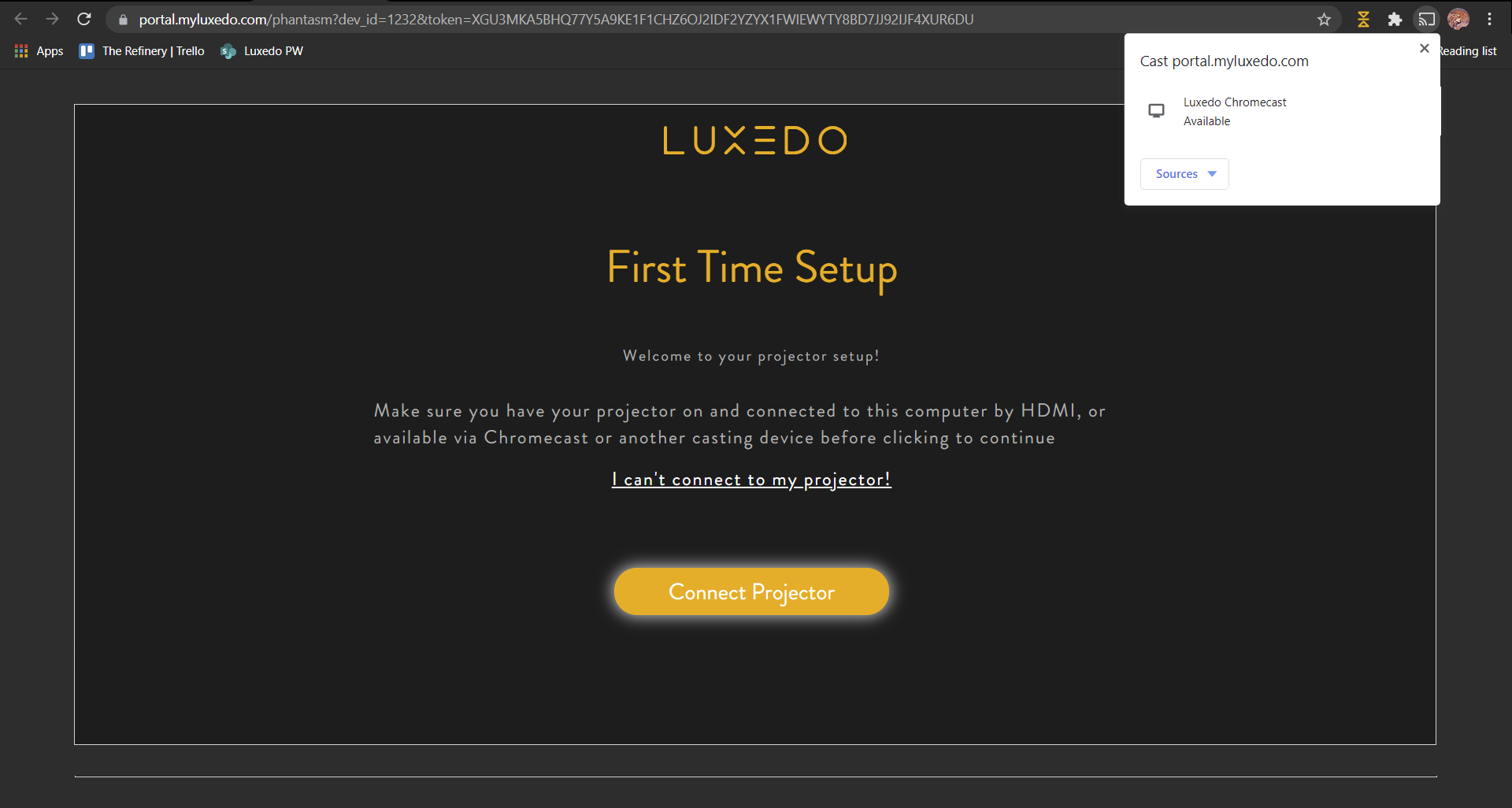
After your projector is connected successfully (either with Method A or B), your projector will project Luxedo logo as shown below:
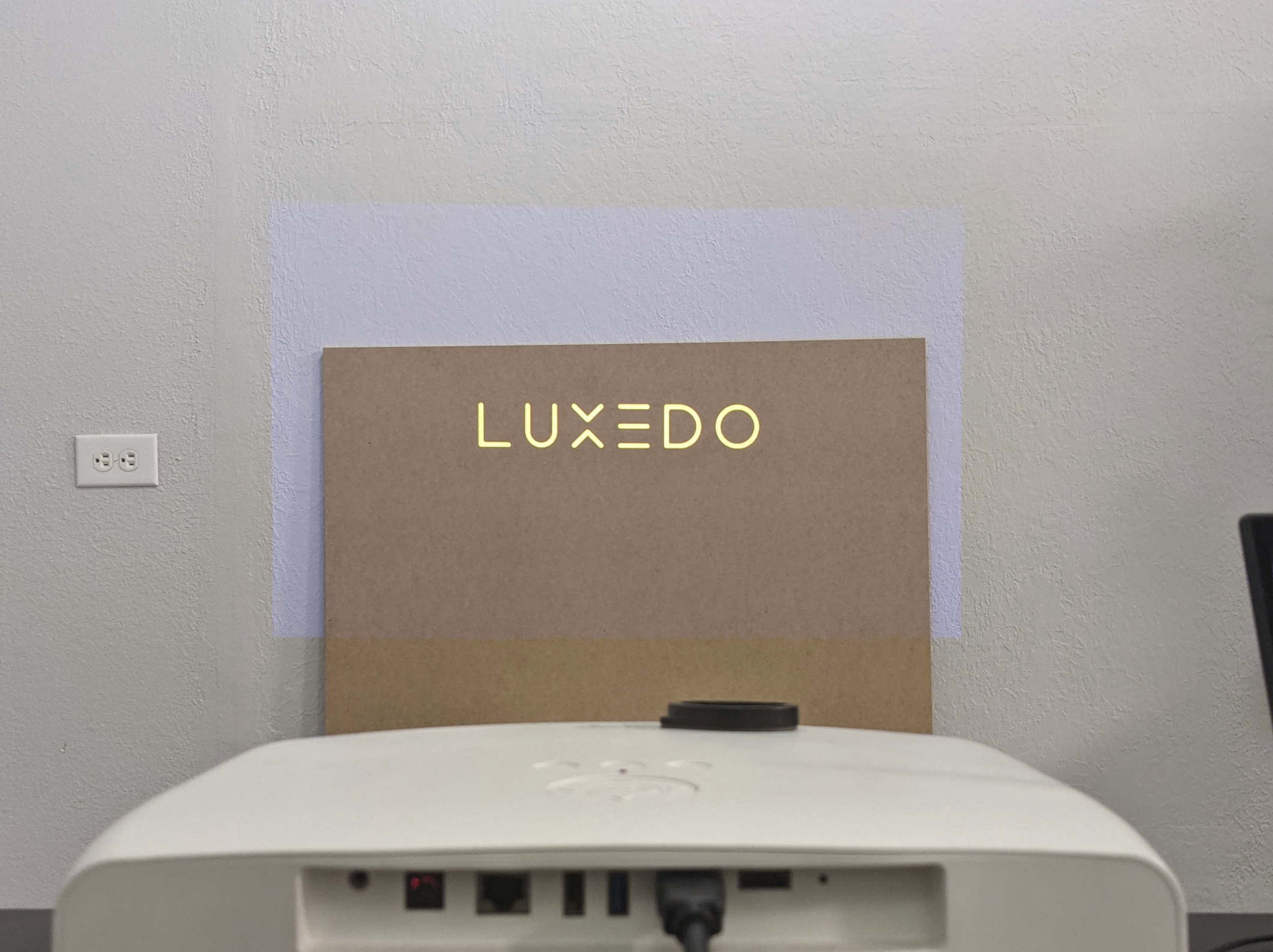
When you have confirmed that your projector is working, click 'Confirm' in the LuxLink tab.
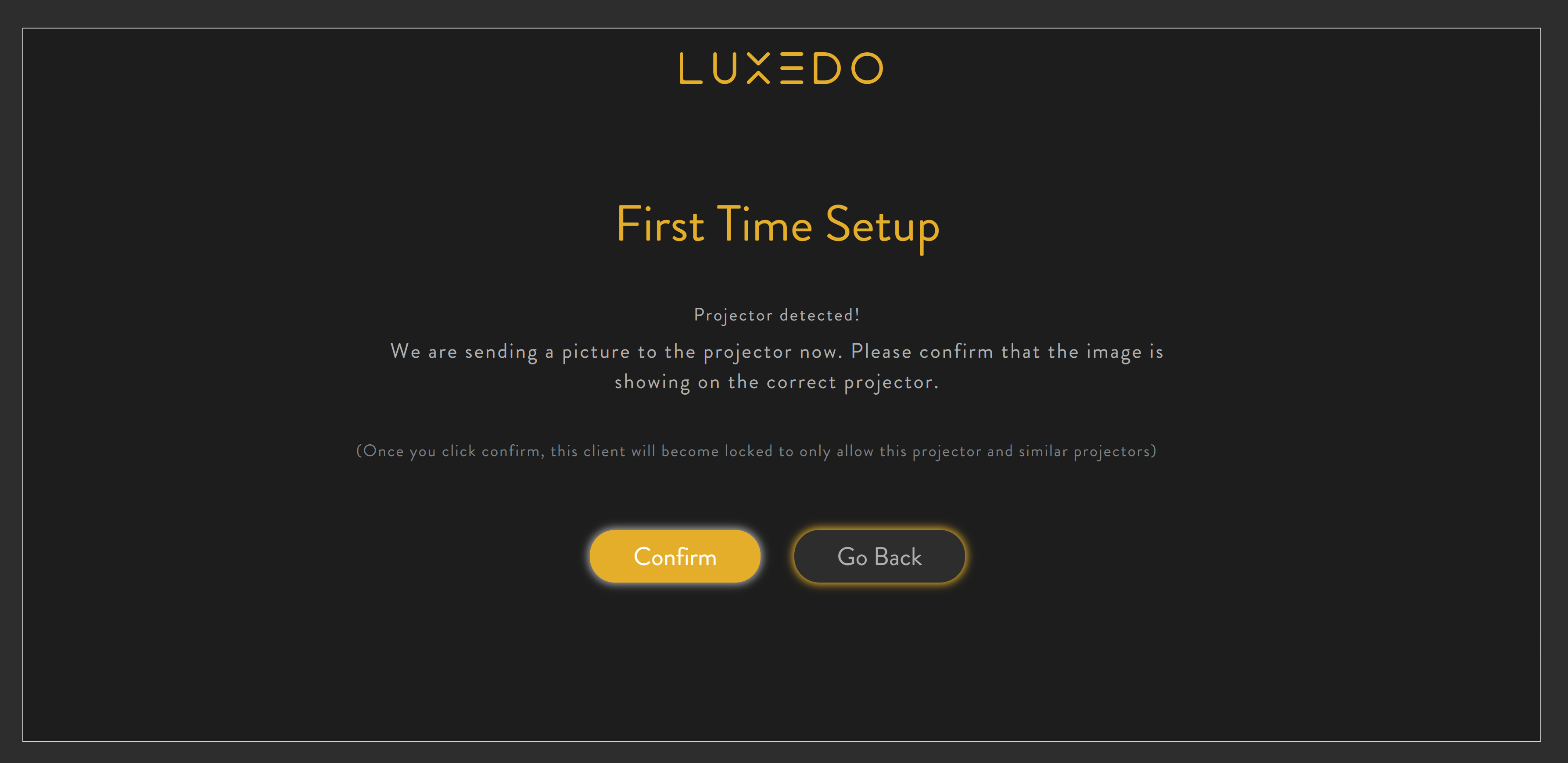
Next let's connect your camera.
Connecting A Camera
Connect your camera to your computer via USB.
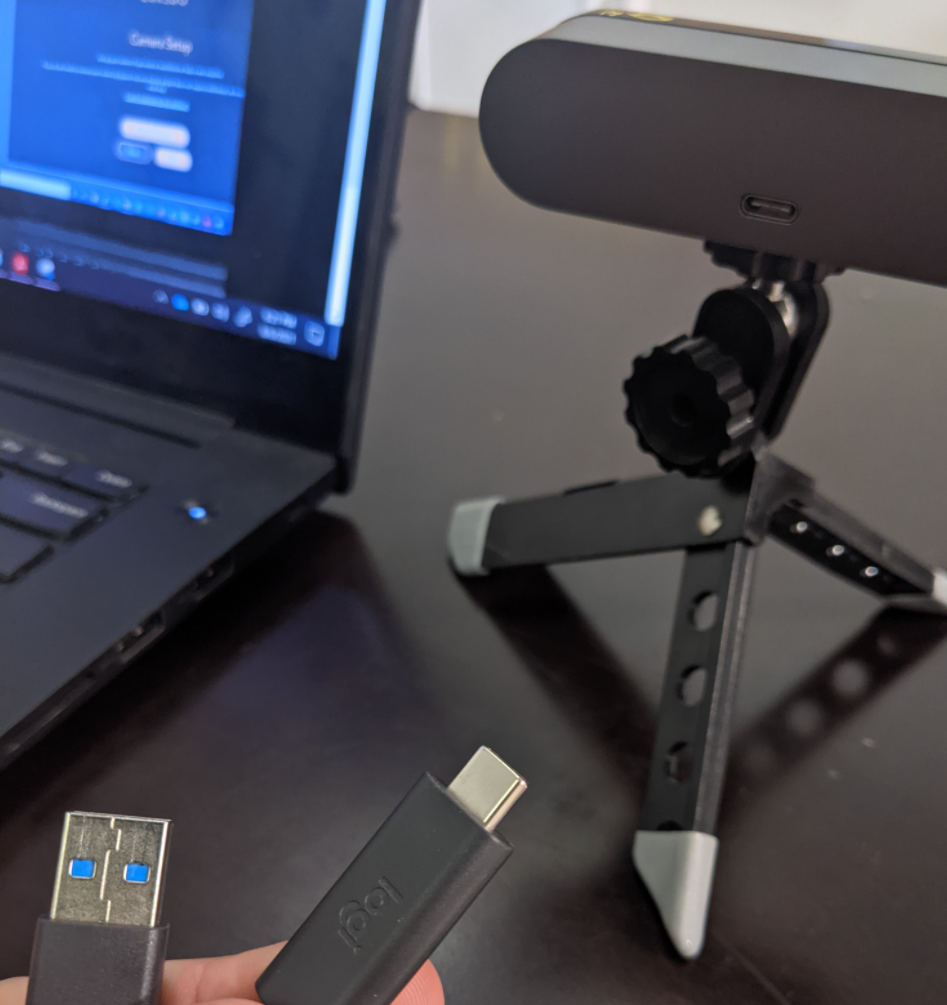
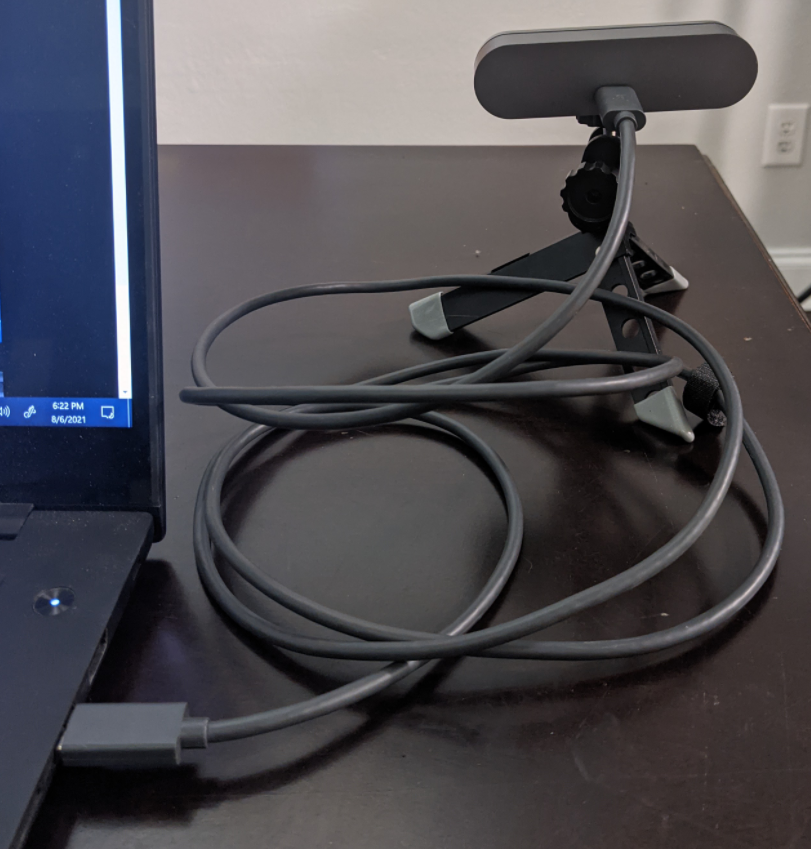
Position your camera so that it is roughly pointing at the projection.
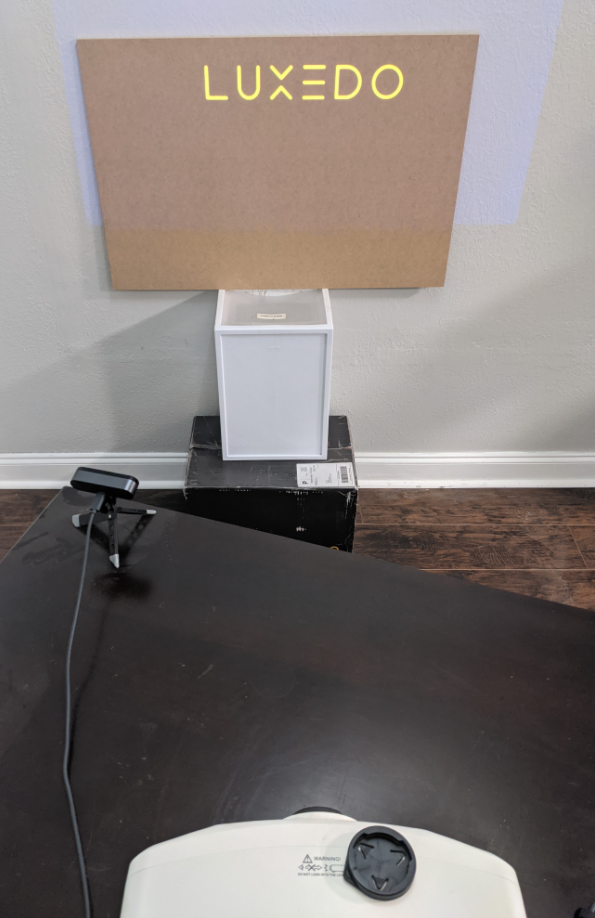
Click 'Connect Camera' and allow Google Chrome to access your camera. You should see a live feed from your camera appear below and your projector will start displaying a heart and a spade. Adjust your camera to put the projected images in the center of the captured image.
At this stage, it's important to get the camera as close to the projection as possible. You want the projected image to 'take up' as much of the captured image's space as possible while still being entirely visible. This will make projector calibration much more accurate in the next step.
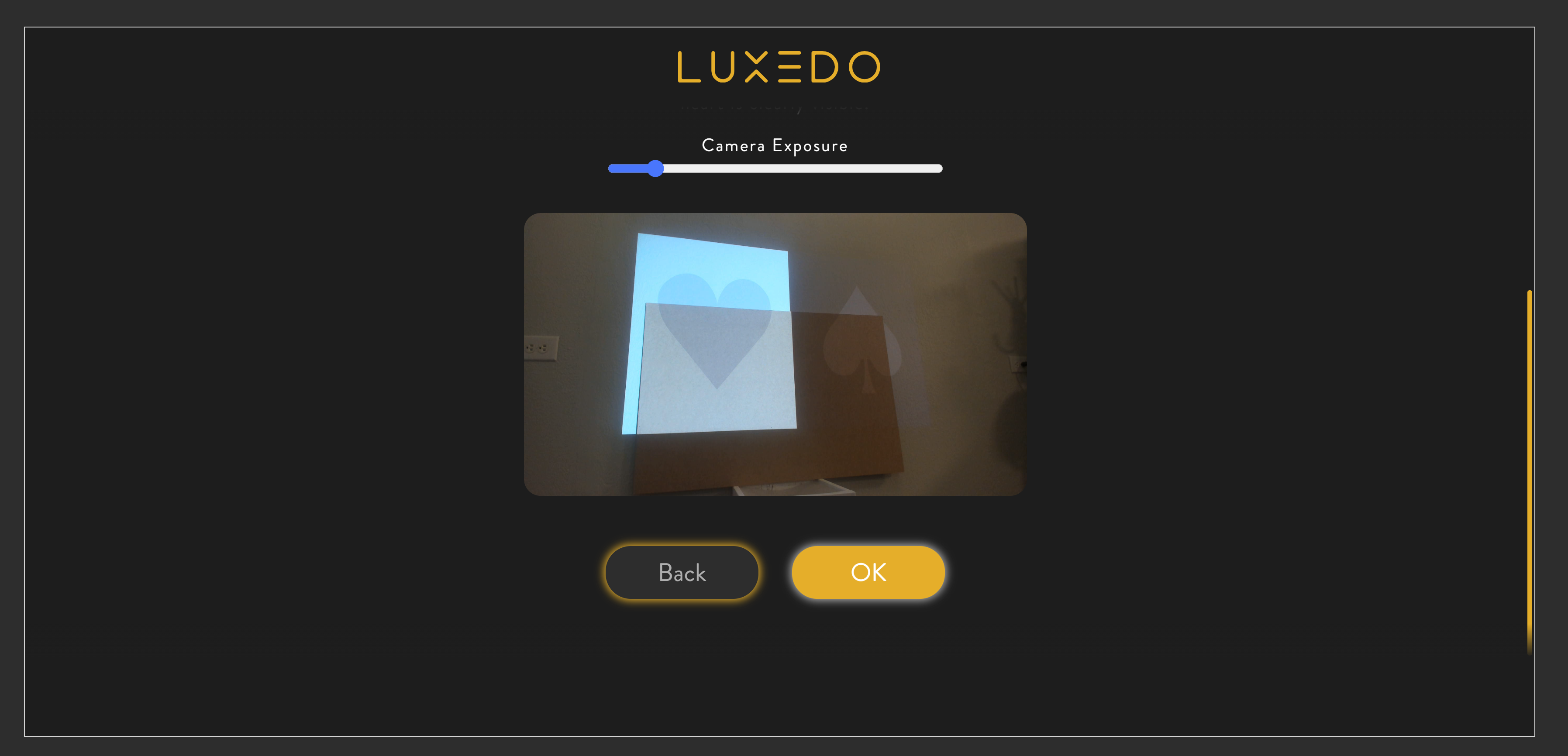
Adjust the slider below until the heart and the spade are both barely visible, and the wall/surface behind the heart is clearly visible. Then click 'OK'. You should see the following image:

That's it! Your LuxLink projector is now setup and ready to go. Be sure to leave the 'LuxLink' tab running in the background. If you close this tab, the session will end and you will have to repeat this process to start a new one.
Part 2: Calibrate Your LuxLink Projector
In order to ensure your project creations will project into the real world correctly, you will first need to calibrate your projector and camera. This calibration is dependent on the relative position of the camera, projector, and environment, so make sure that your projector and camera are in their final positions before proceeding. If you move either of them after calibrating you will have to re-calibrate again.
Go back to the MyLuxedo portal page and click on the 'Projectors' button in the menu on the left.
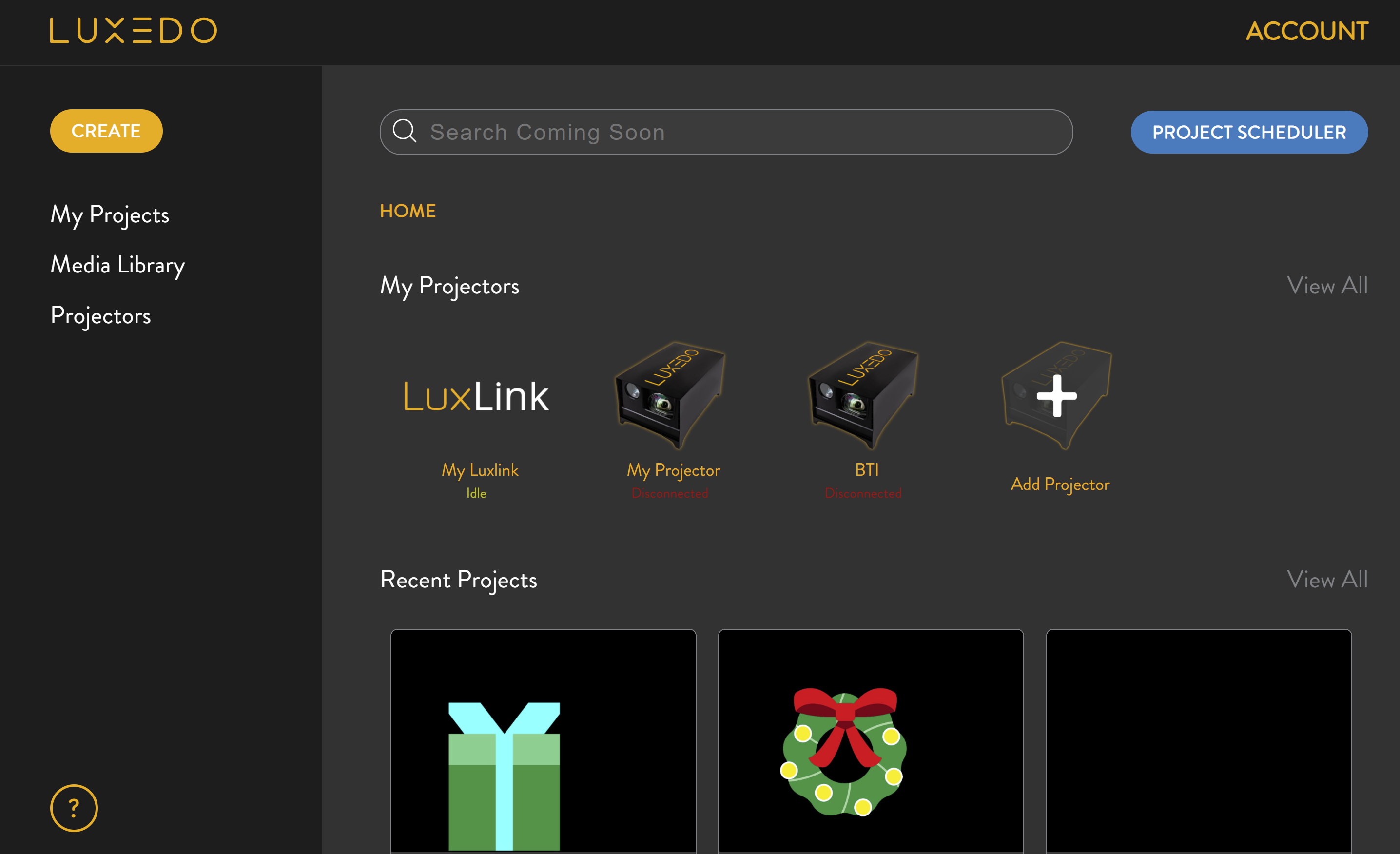
Then click on the LuxLink projector you have just created (titled 'MyLuxlink' in this tutorial).
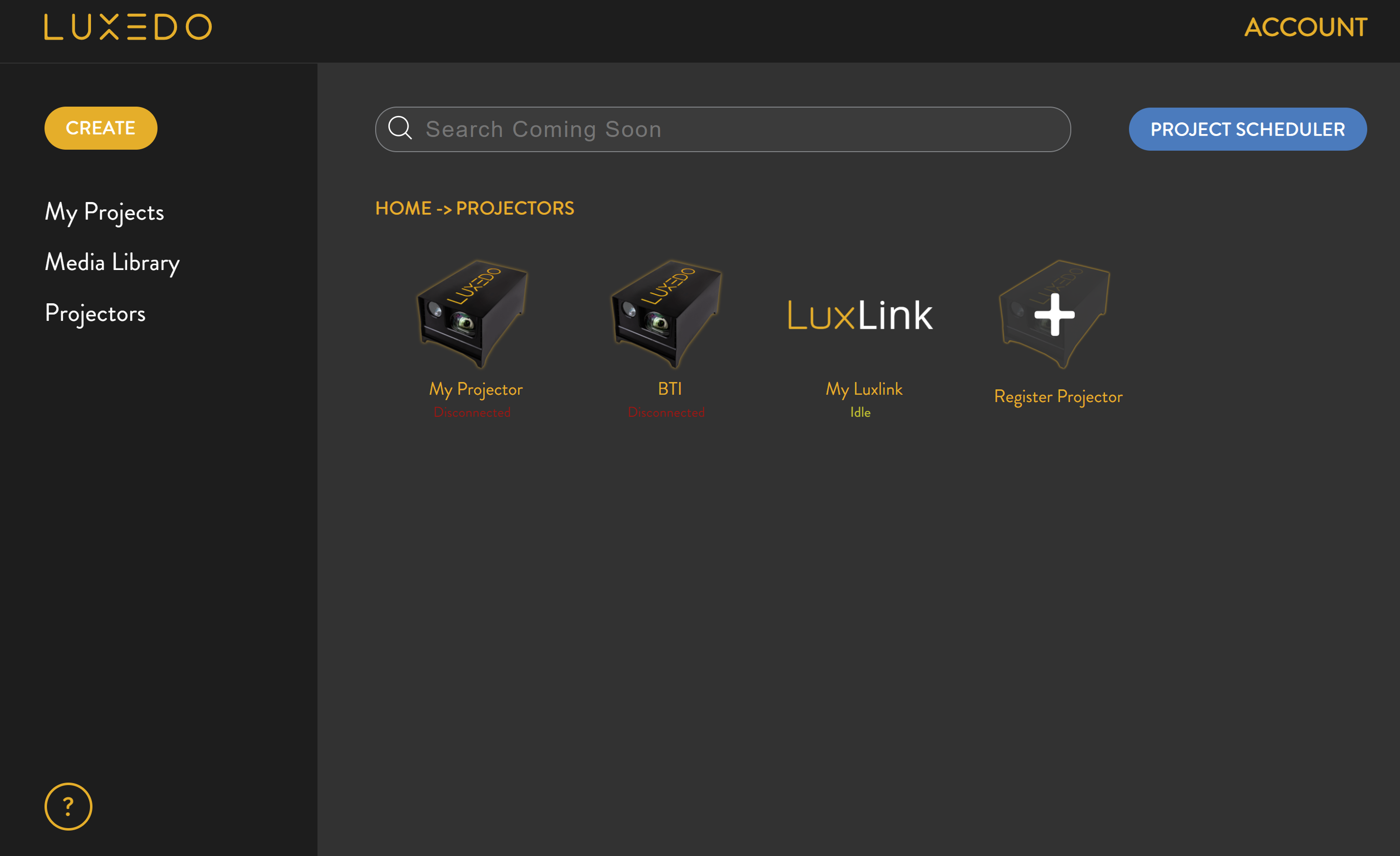
This will open the settings for your LuxLink projector. In the 'Overview' section, click 'CALIBRATE MY DEVICE'.
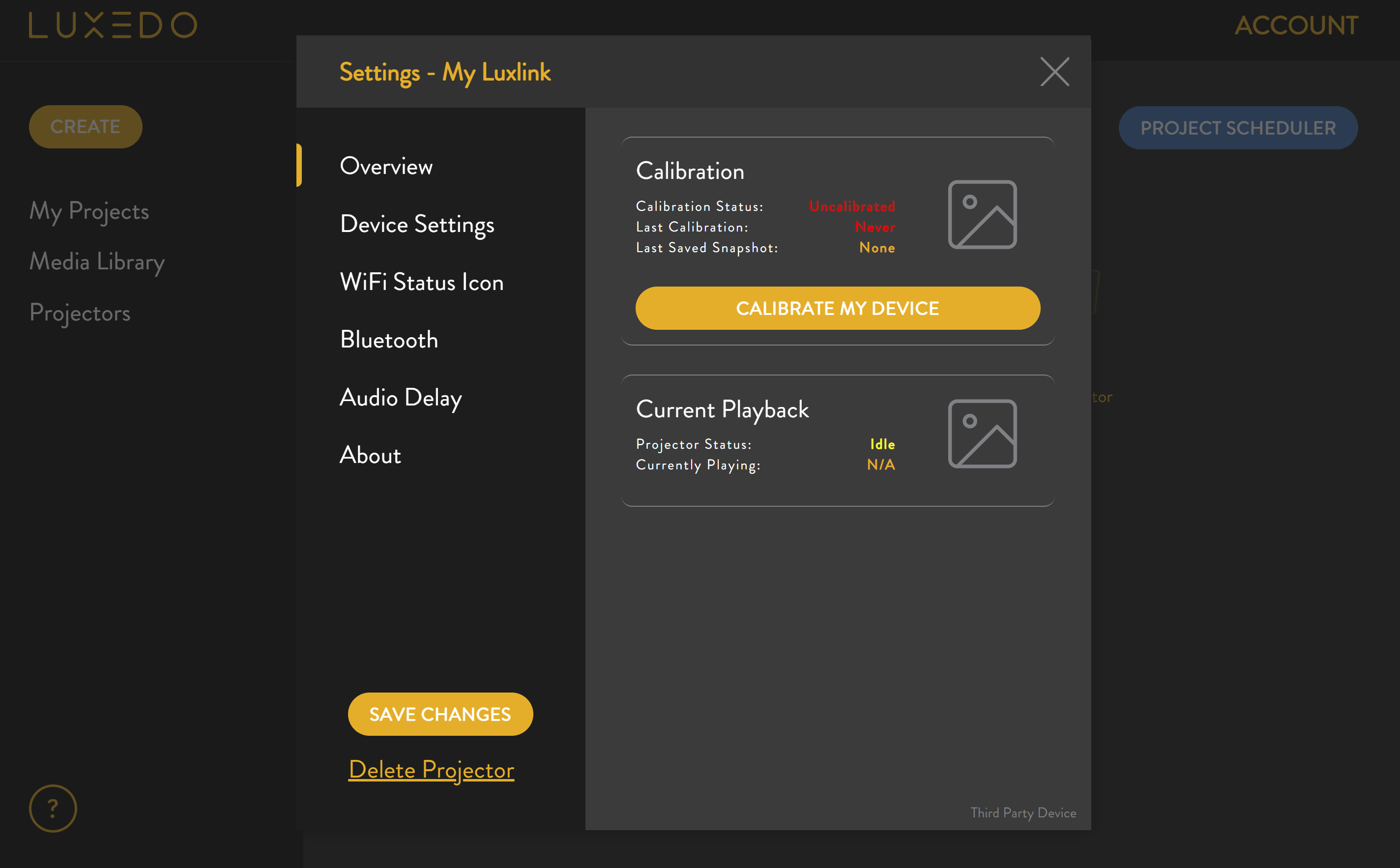
This will bring up the calibration control overlay for your device. This page will walk you through the calibration process.
Click the button labeled 'Prepare for Calibration'.
You'll then see the calibration page pictured below. Be sure to follow each step in order to calibrate your device as effectively as possible.
Be sure to turn off any lights which may brighten the projection surface, the darker the space, the more effective the calibration. If you are unable to control the brightness of the projection space, click the option "My scene is subject to variable lighting (e.g. cars driving by regularly with high beams)" as seen below. We find that even in such cases this option is usually unnecessary, and it will make your calibration take longer. We recommend trying this option only if other calibrations seem to fail consistently.
Click "Start Calibration".
Your projector will begin projecting images that look like this:
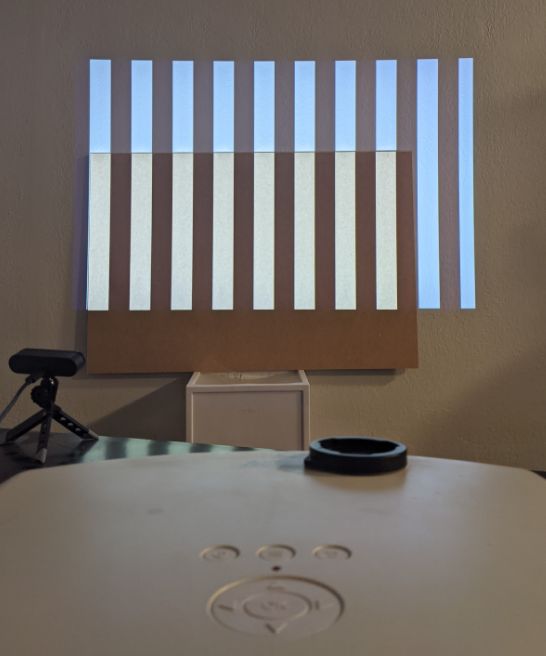
And the portal will keep you informed of the calibration's progress.
When it has finished, click 'Close' or 'Create a Scene'. Your projector is now calibrated!
Part 3: Create Your First Project
Return to the MyLuxedo portal home page and click the 'CREATE' button in the top left corner.

Give your scene a name and select the newly created LuxLink ('MyLuxLink' in this tutorial) from the 'Projector or Projector Group' section. If your only projector is the LuxLink projector, you will only see one option. When you have finished your selections, click 'CREATE' at the bottom left.
This will create your first project and take you to the project editor. This is where you will do the bulk of your creative work with our software.
NOTE: There are many features in the editor which we will not cover in this tutorial. Check out our other Zendesk articles to learn how to make more advanced projects.
First off, let's take a snapshot of our projection surface.
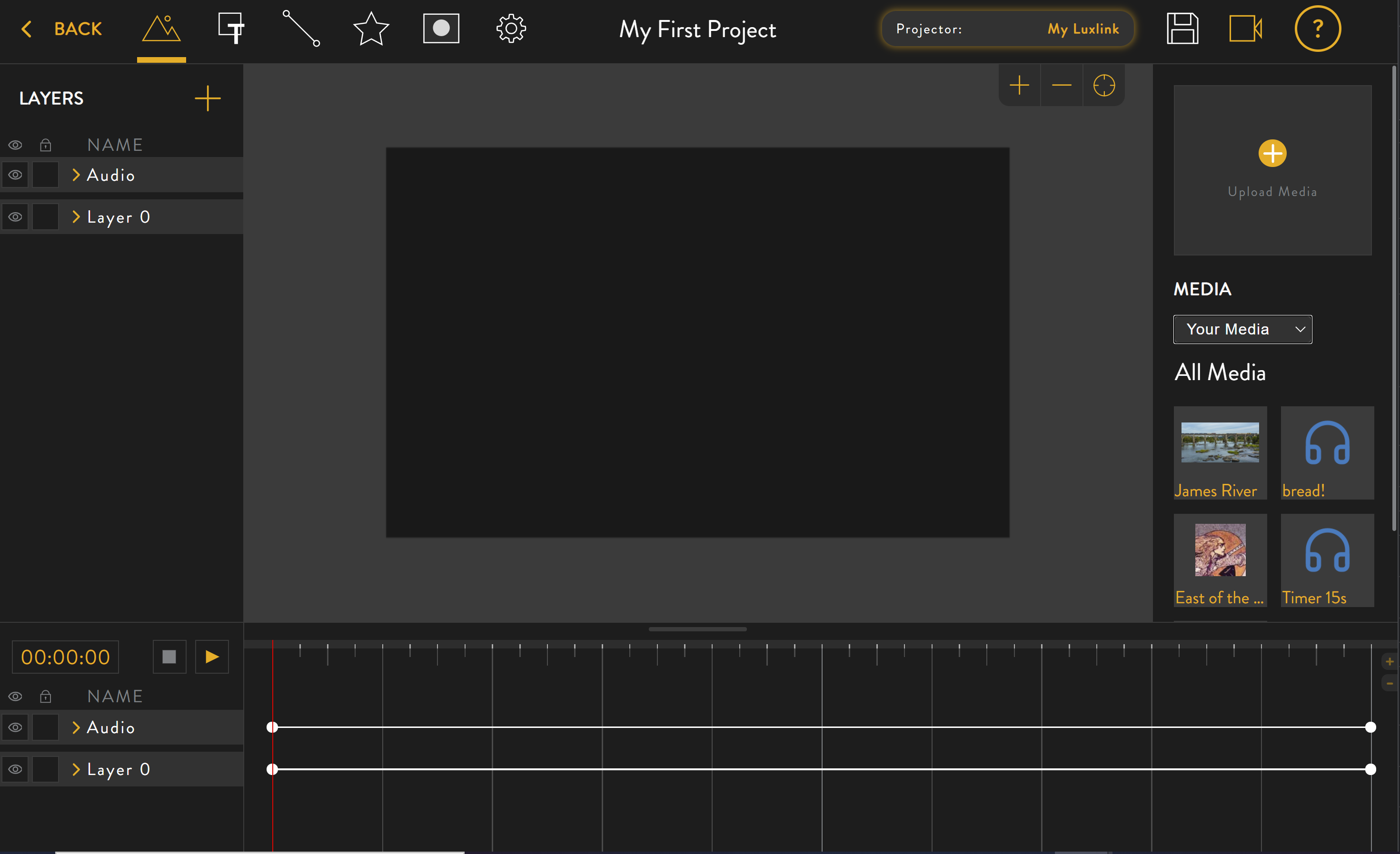
Hover over (but do not click) the projector menu in the top right of the editor. This will show you the various operations you can perform with your projector from within the project editor.
Select 'Snapshots (Smart Background)'
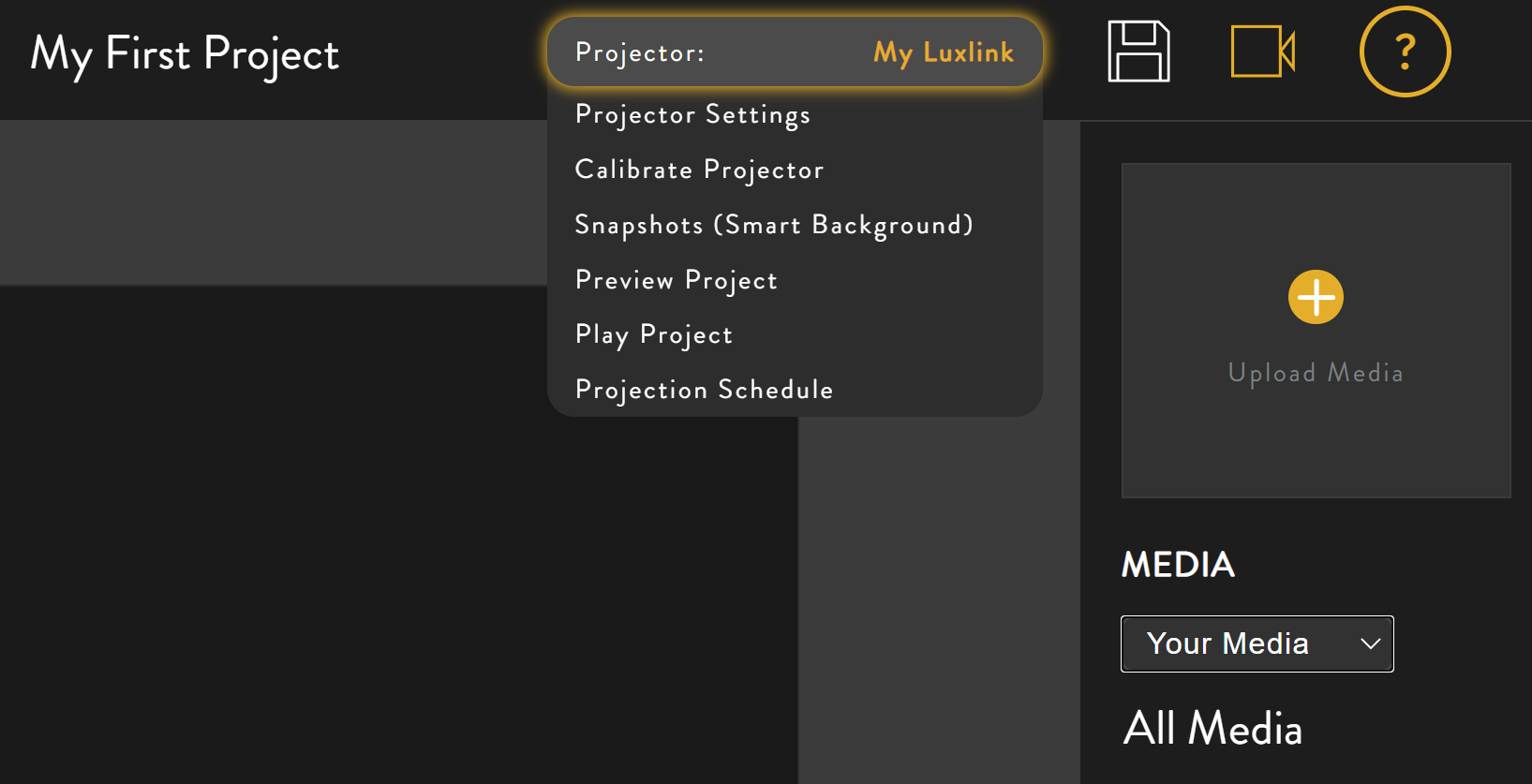
This will bring up the snapshot overlay. Click 'CAPTURE' to take a new snapshot.
Wait a few moments as your camera takes a snapshot of the environment and use your projector's calibration to map it to the screen. When it's done, it will load itself as the 'background' for your project.
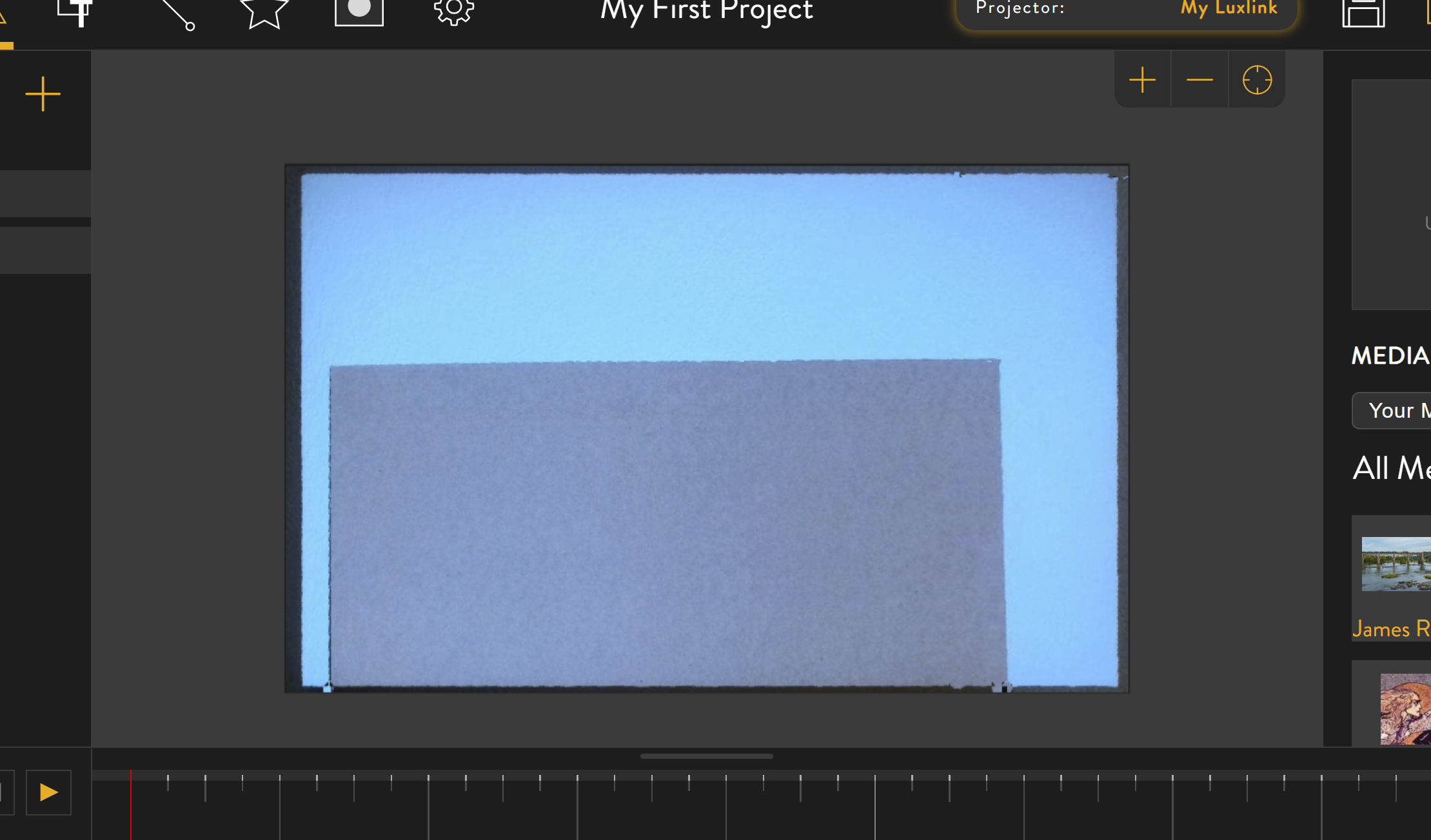
Naturally, when you perform this step you will be looking at your own environment, perhaps the wall of your house. In this tutorial we are looking at a flat wall with a board propped up against it. It's certainly no work of art - let's see if we can dress it up a little.
Click the 'media' icon in the top left: 

This will open the media toolbar on the right side of the editor as pictured below. The media toolbar allows you to add images, video, and audio resources to a project.
Click the source dropdown and select 'Public Media'.
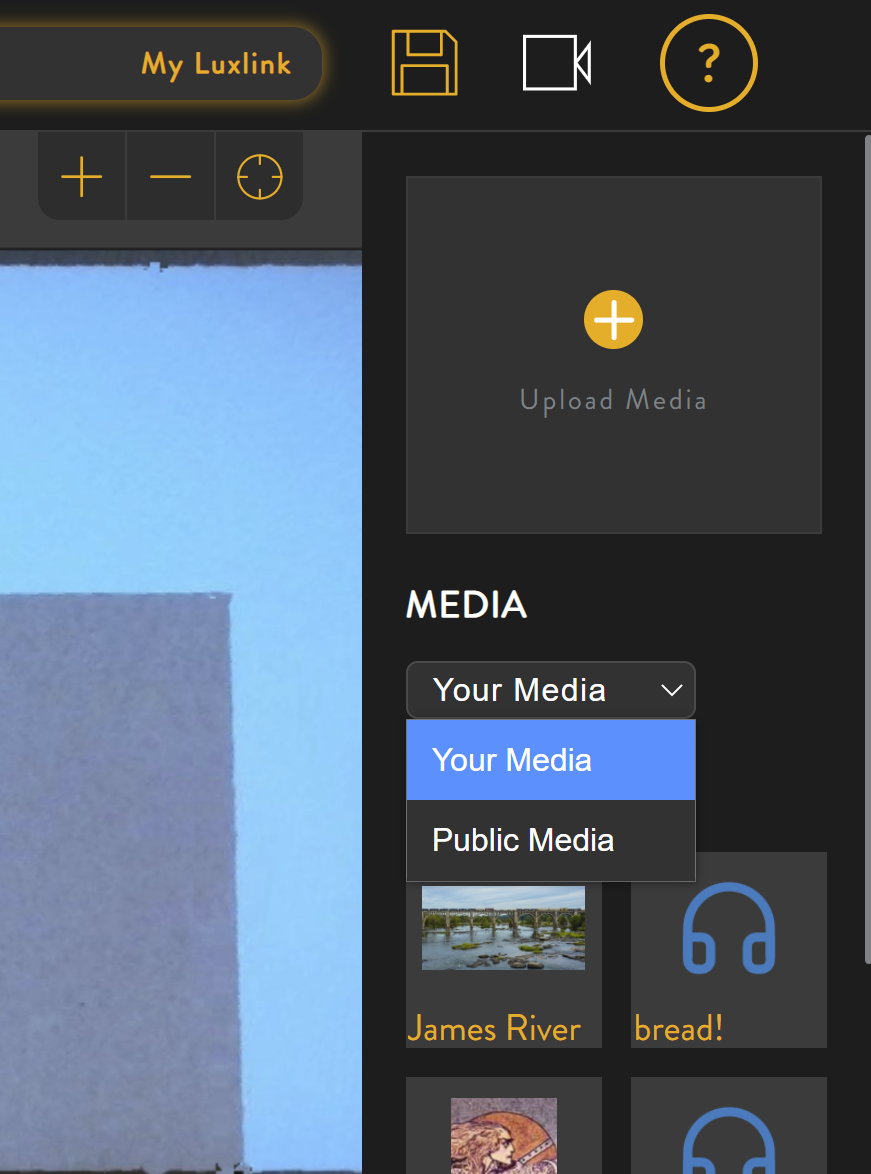
This brings up some folders containing media resources which are available to every Luxedo user.
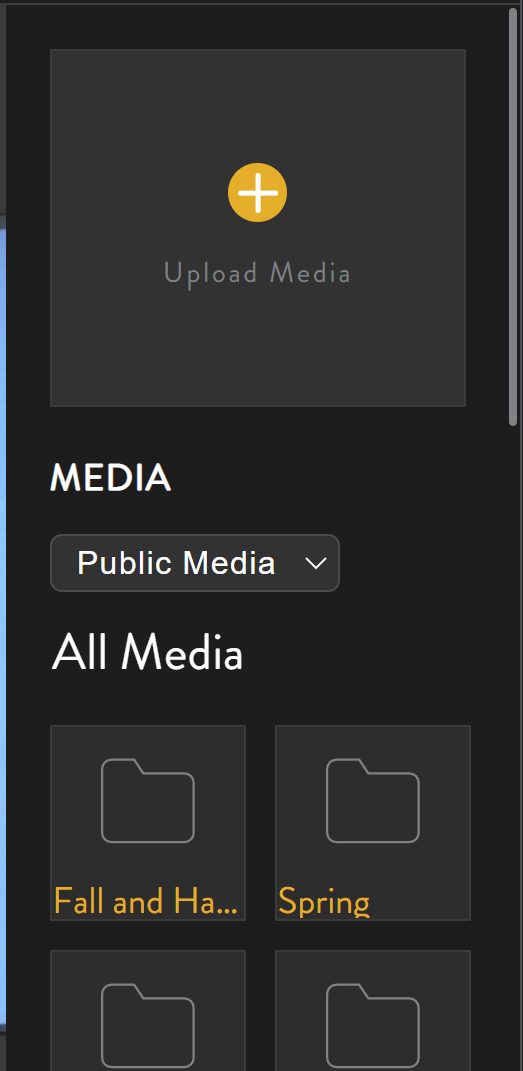
Scroll down to the 'Christmas' folder and double-click it to open it.
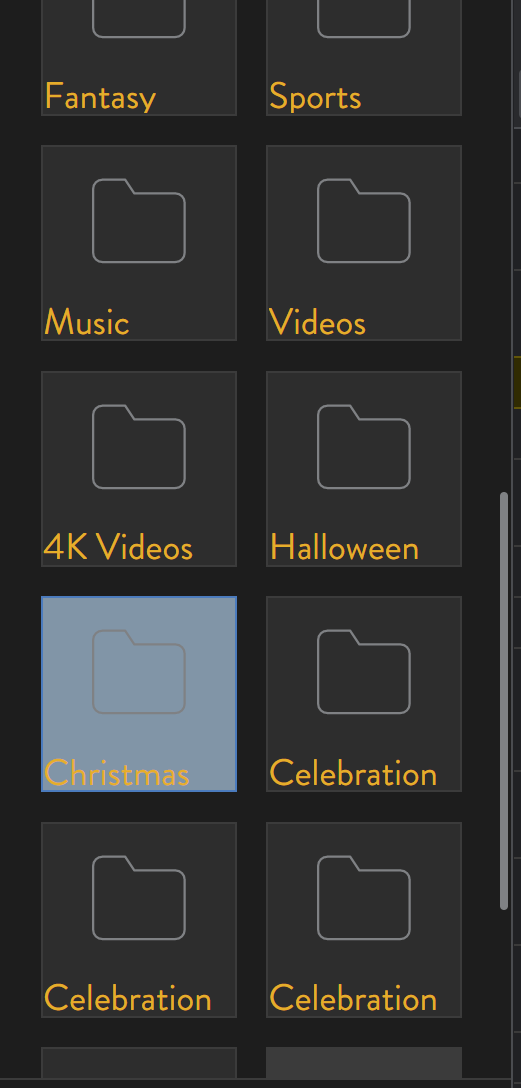
This folder contains some clipart-style images which relate to Christmas. Find the 'Sleigh' resource, and then click and drag it onto the middle of your project.

The resource will drop into your project and become possible to manipulate. Try out dragging and scaling it!

The sleigh is placed at the top of the board but it doesn't line up quite right! Media can be rotated by clicking and dragging the top rectangular drag handle.
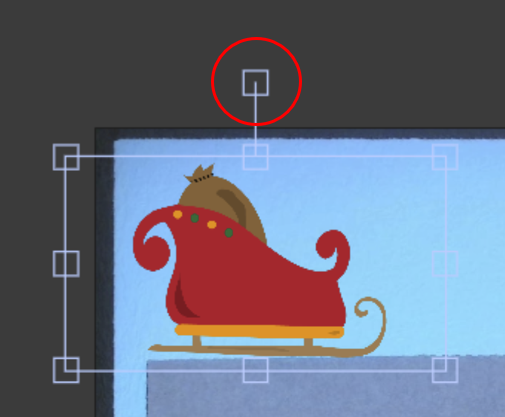

Now it fits perfectly.
Next, let's animate the sleigh so that it travels across the top of the board. Make sure the sleigh is selected and then, in the top left, click on the path tool.

This will open the path toolbar on the right. Click 'NEW PATH'.
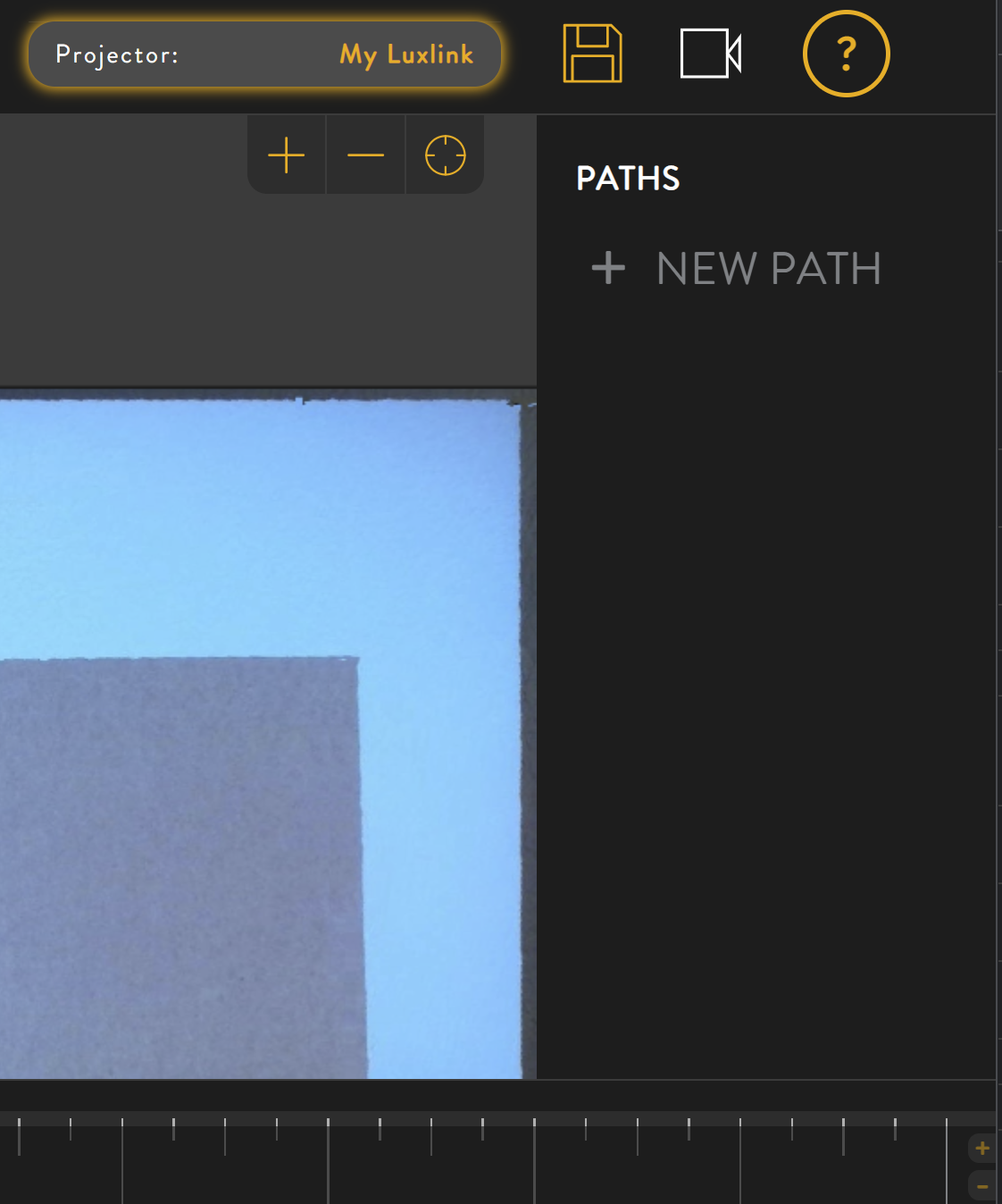
We just want the sleigh to travel in a straight line, so select the 'LINE' shape in the top right.
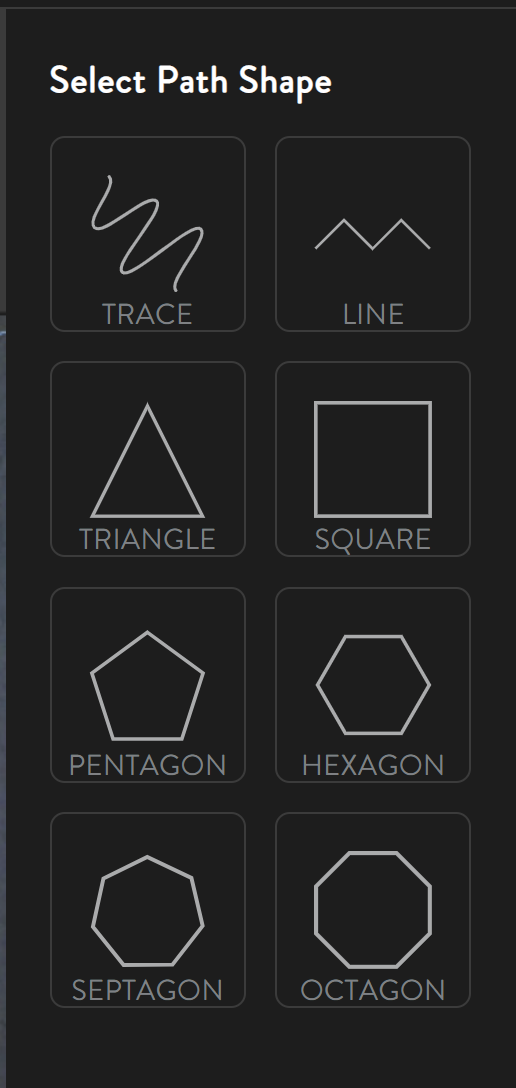
This will insert a path into the project for the sleigh. Note that you are now editing the path, which means that you can change the path shape and definition.

By default the line has dropped in perfectly vertical. Let's change it so that the sleigh will travel across the top of the board.
Click and drag the top node (the little white circle) so that the path is now horizontal.
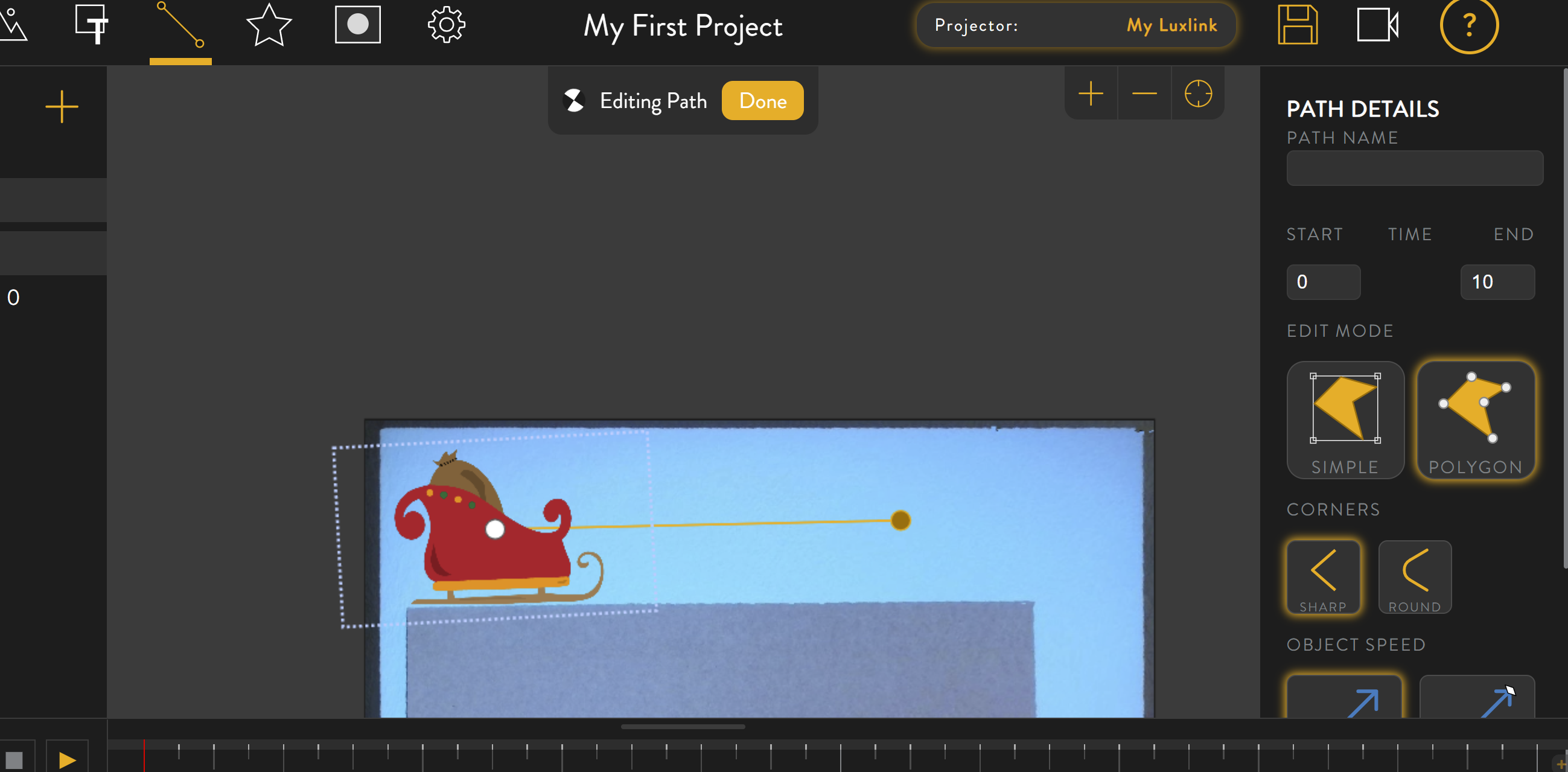
Then scroll down in the path toolbar on the right and click 'SAVE'. This will end path edit mode.
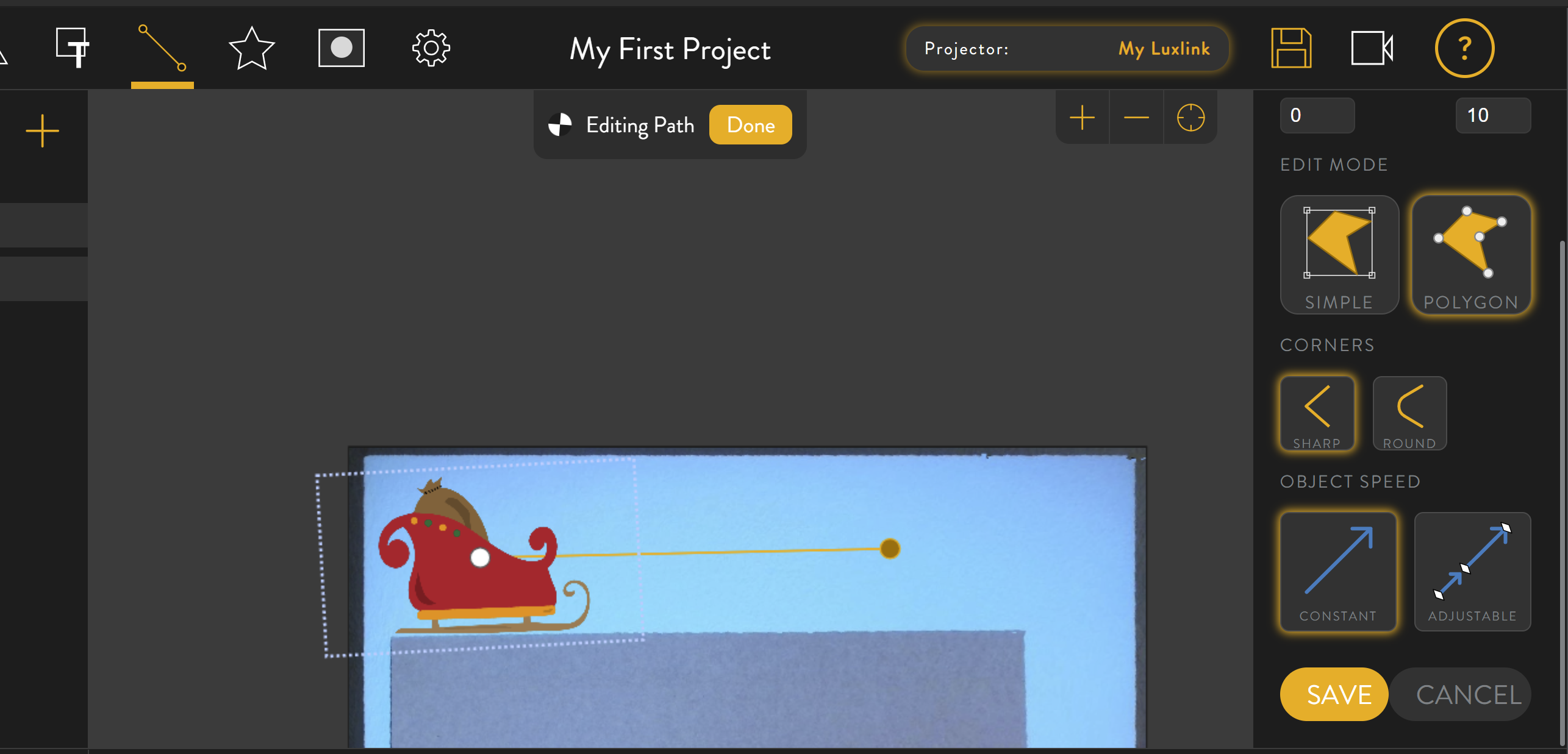
Let's check to see what will actually happen when this project plays. In the bottom left of the editor, click on the play arrow: ![]()

This will 'play' the project in your browser from start to finish. The sleigh will move along the path we have defined.
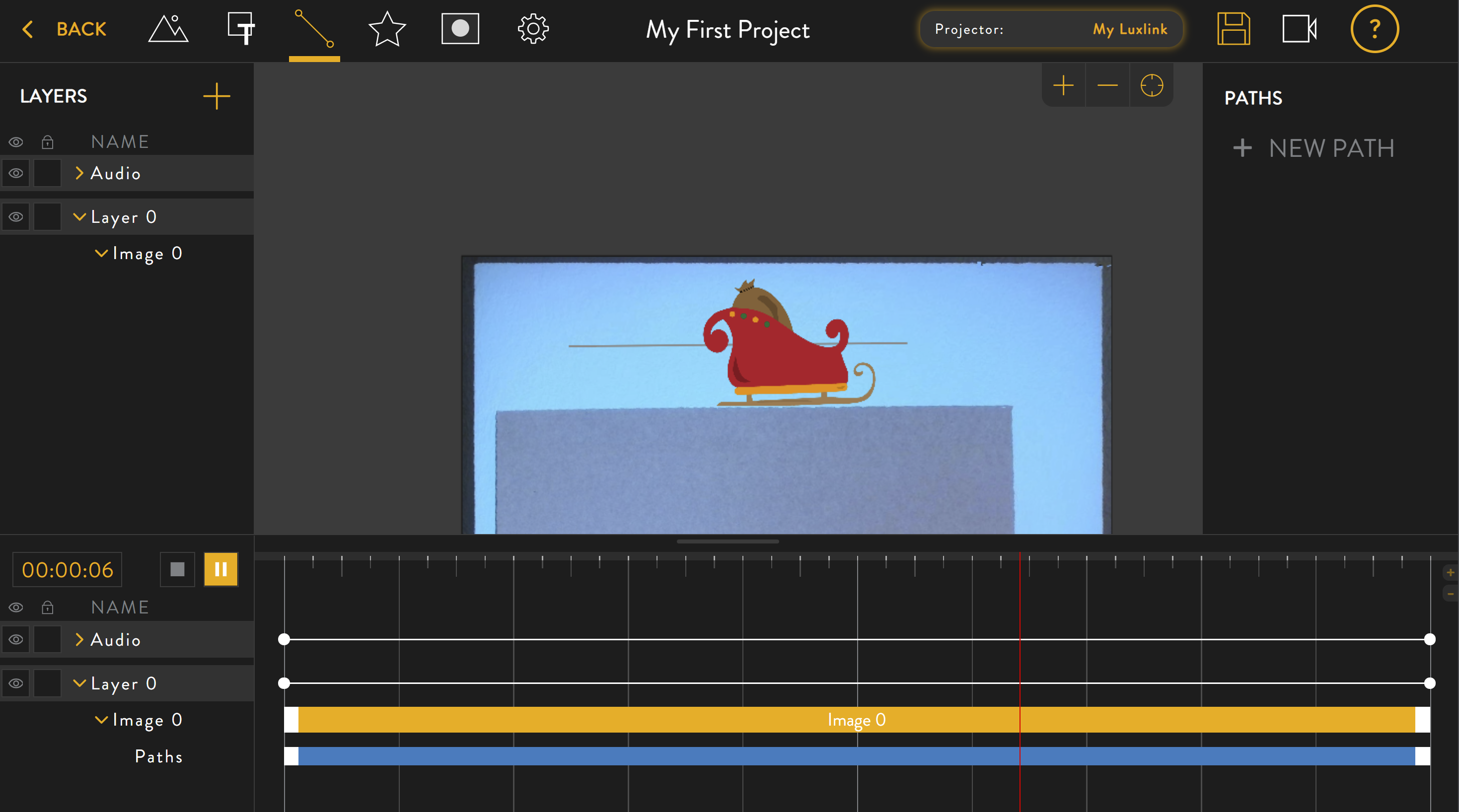
Although we are trying to add media to our public library of content all the time, you will frequently encounter situations where you need additional media. Fortunately there are many sources of both free and paid image/video available for download on the internet. Let's try uploading some content from outside of Luxedo.
Click the 'media' icon in the top left.

In the media toolbar on the right, click 'Upload Media' at the top.
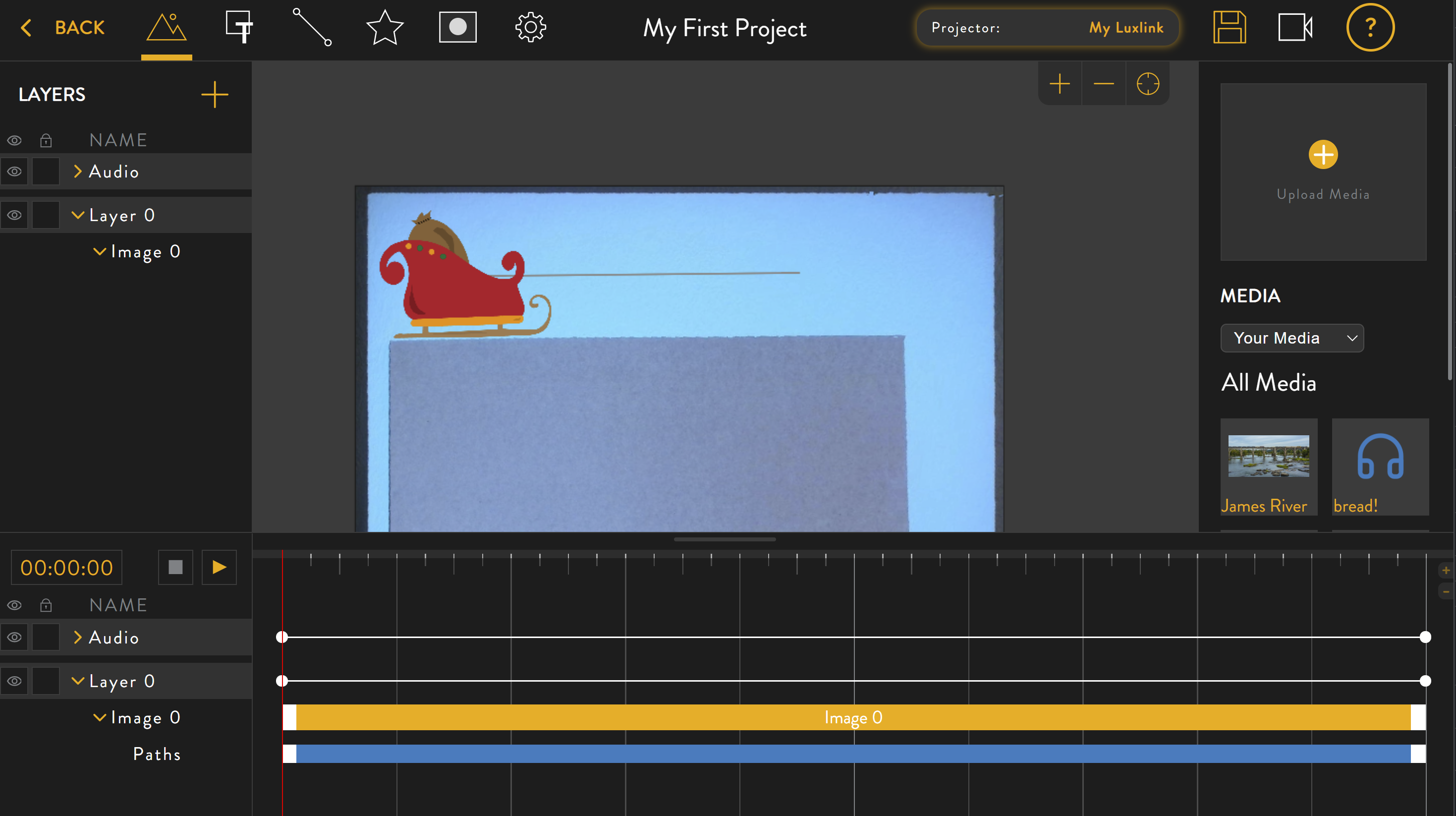
This brings up the media upload overlay. Drag and drop any compatible file onto this window, or click the big white square to open a filesystem browser (pictured below).
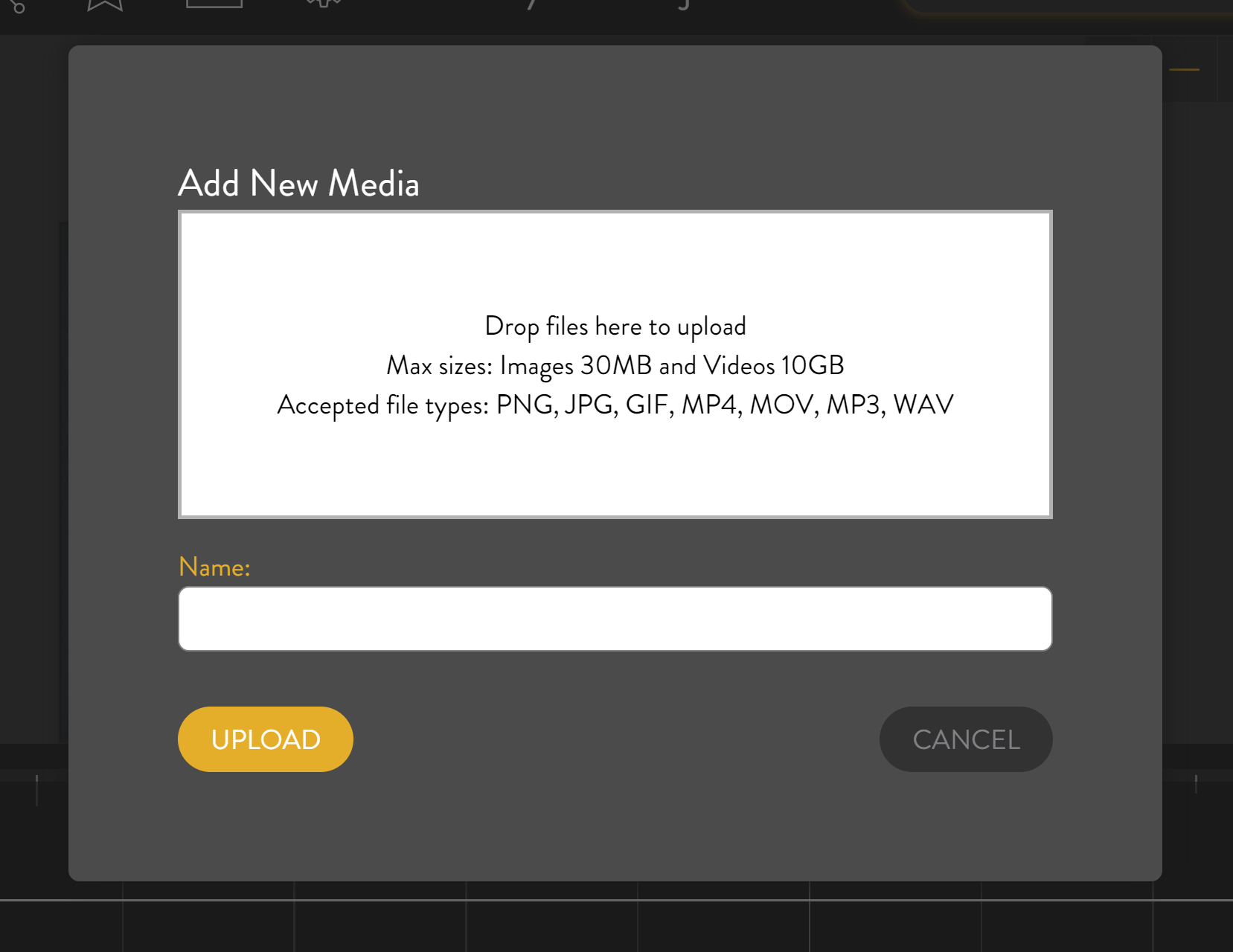
Here I select a picture of some icicles which I have downloaded from a royalty-free website dedicated to sharing images.
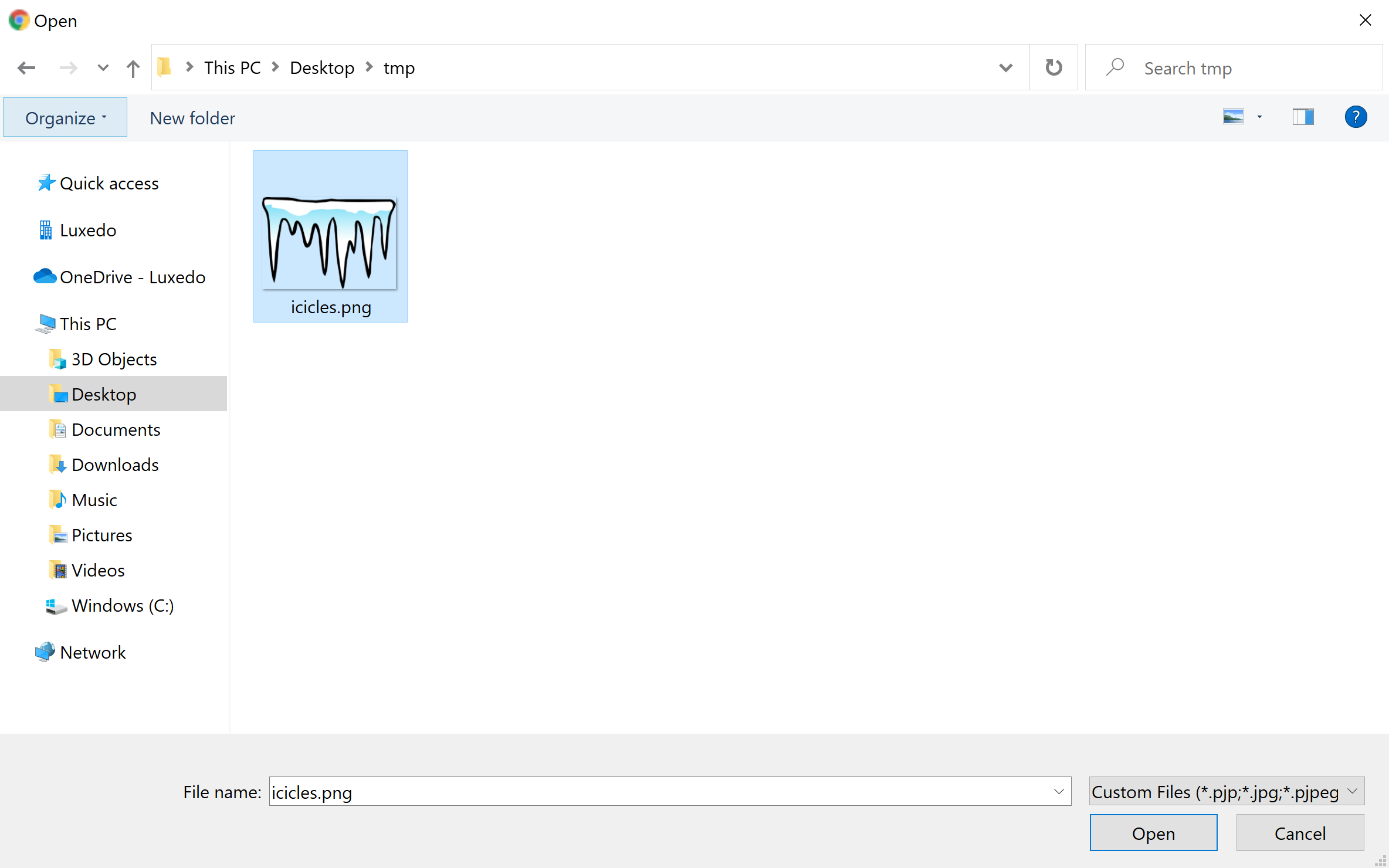
When you select your file, it will appear in the overlay. Then just click 'UPLOAD'.

When it finishes (which may take some time if you are uploading video content), click 'CLOSE'.
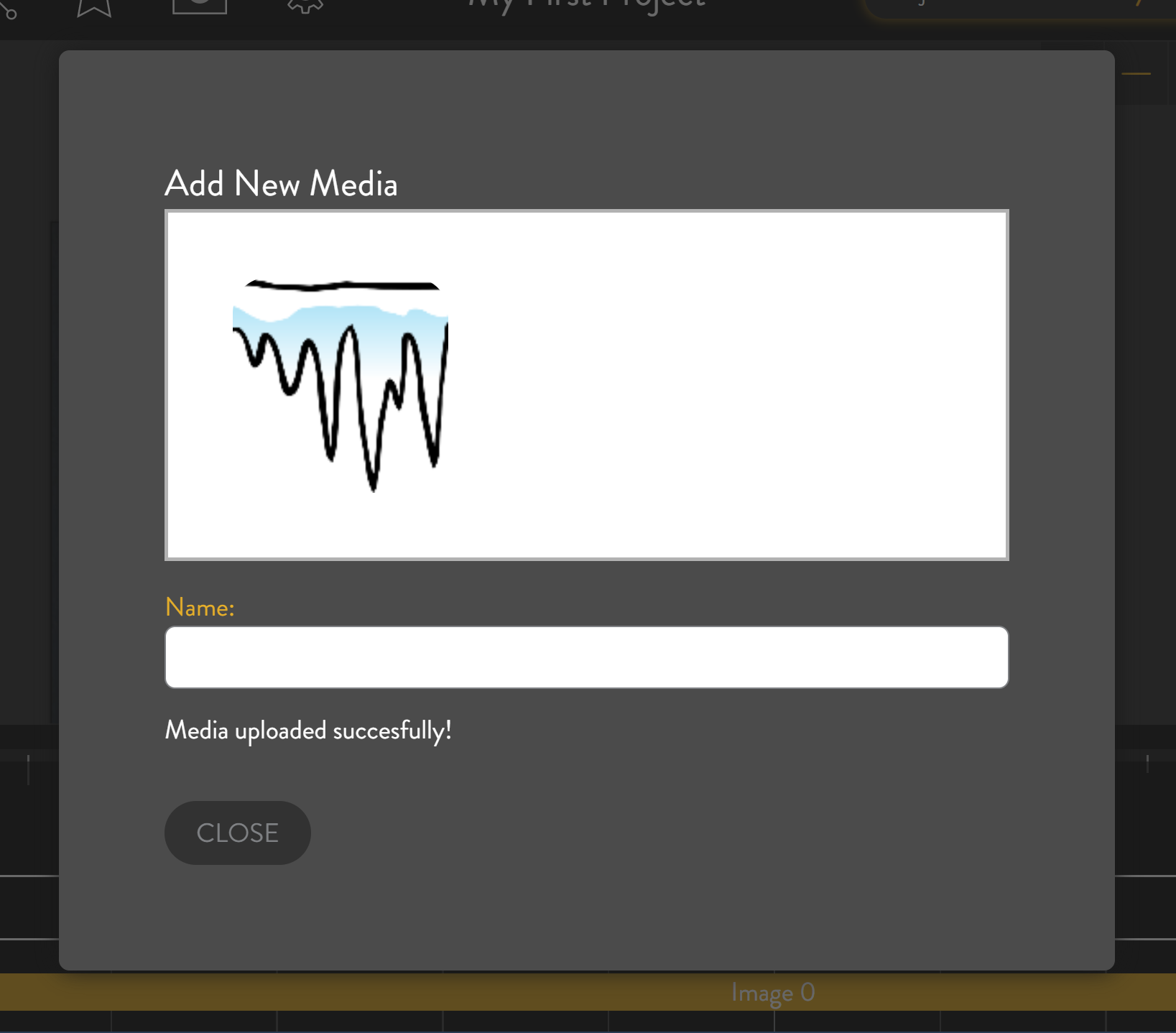
You will now see your new media in the media toolbar at the bottom.
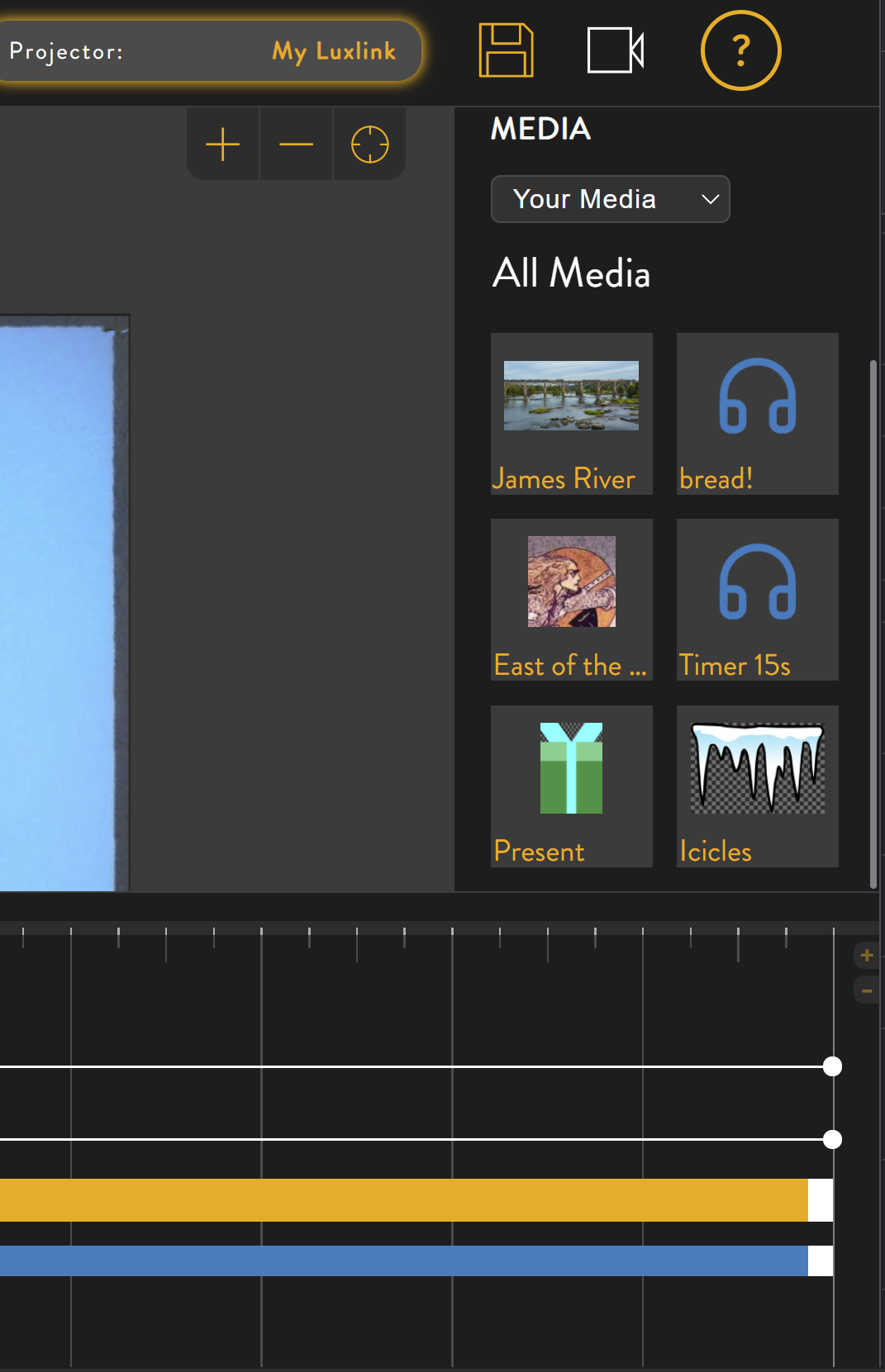
Click and drag your new media into the project.
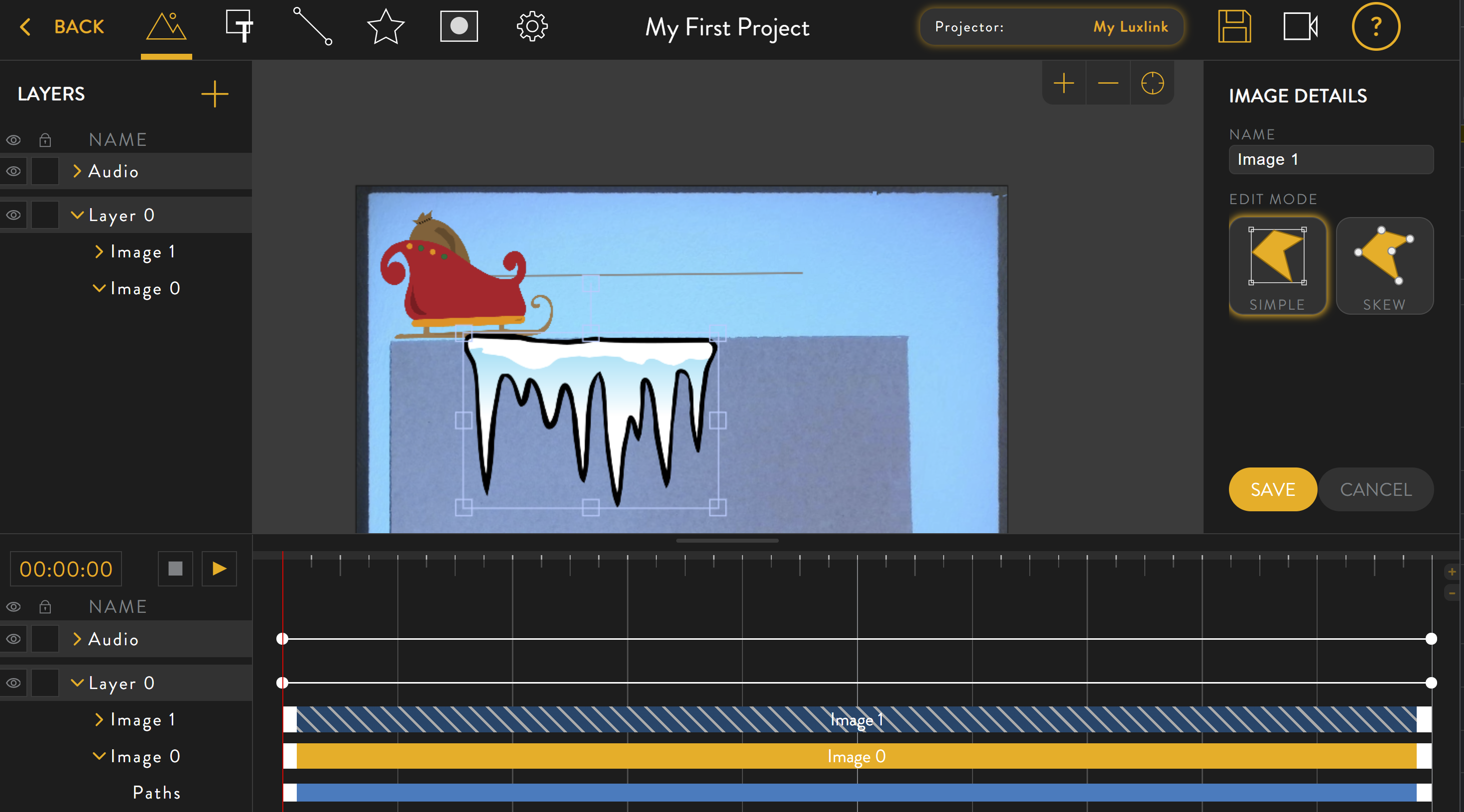
Here I have added two icicle images to the board to make it appear as if the sleigh is gliding across snow.
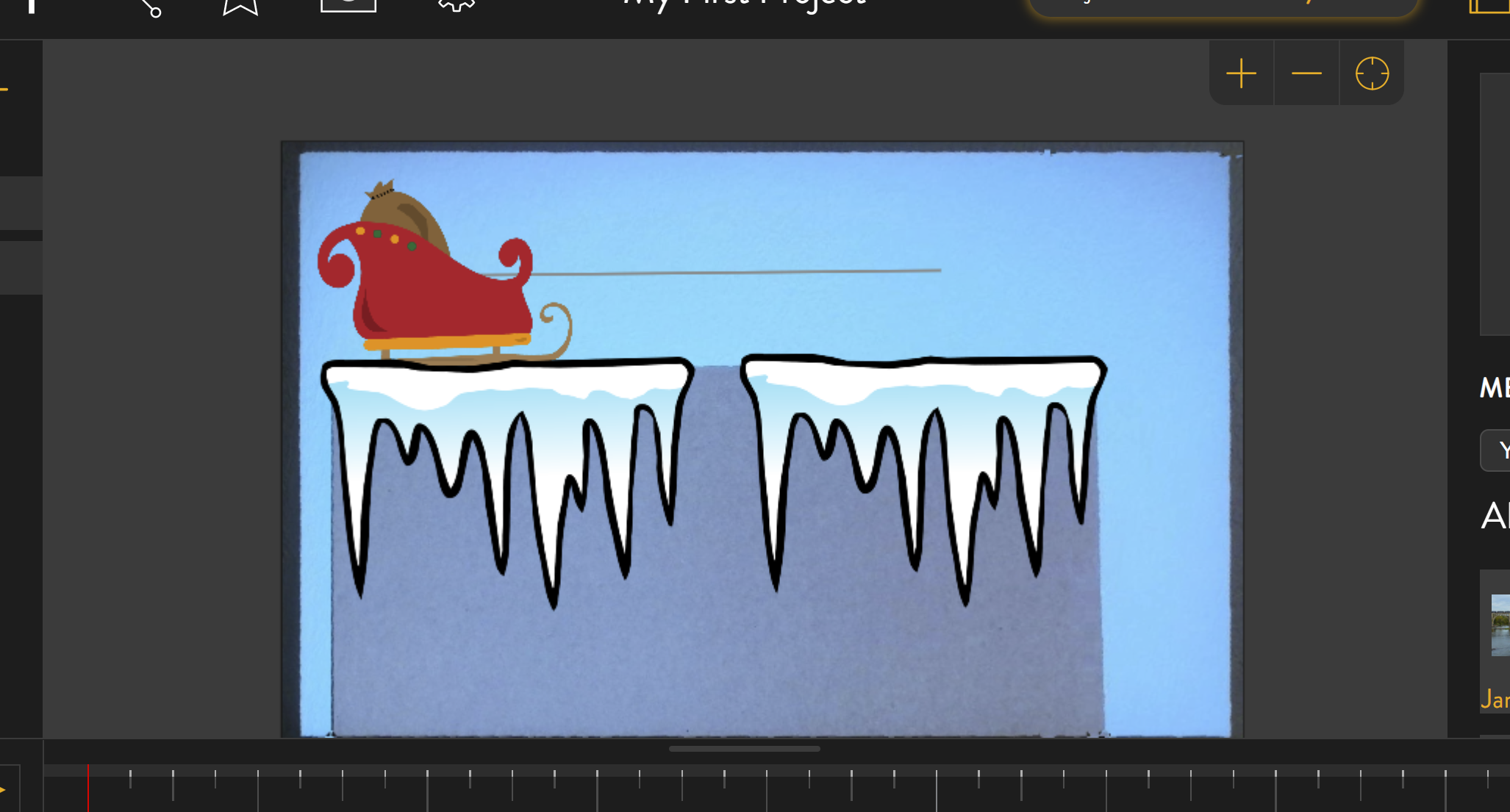
Part 4: Render and Preview Your Project
When you are done with your project you will need to 'render' it before it can be projected. Rendering is the process of converting your project into a proper full-resolution video.
For simple projects like the one we have created, rendering is fast. For more complicated projects (for instance, with lots of high-resolution video resources) rendering can take a few minutes to a few hours.
To render, click the 'render' icon in the top left of the editor: ![]()

This will summon the render/preview toolbar. Click the button labeled 'Render'.
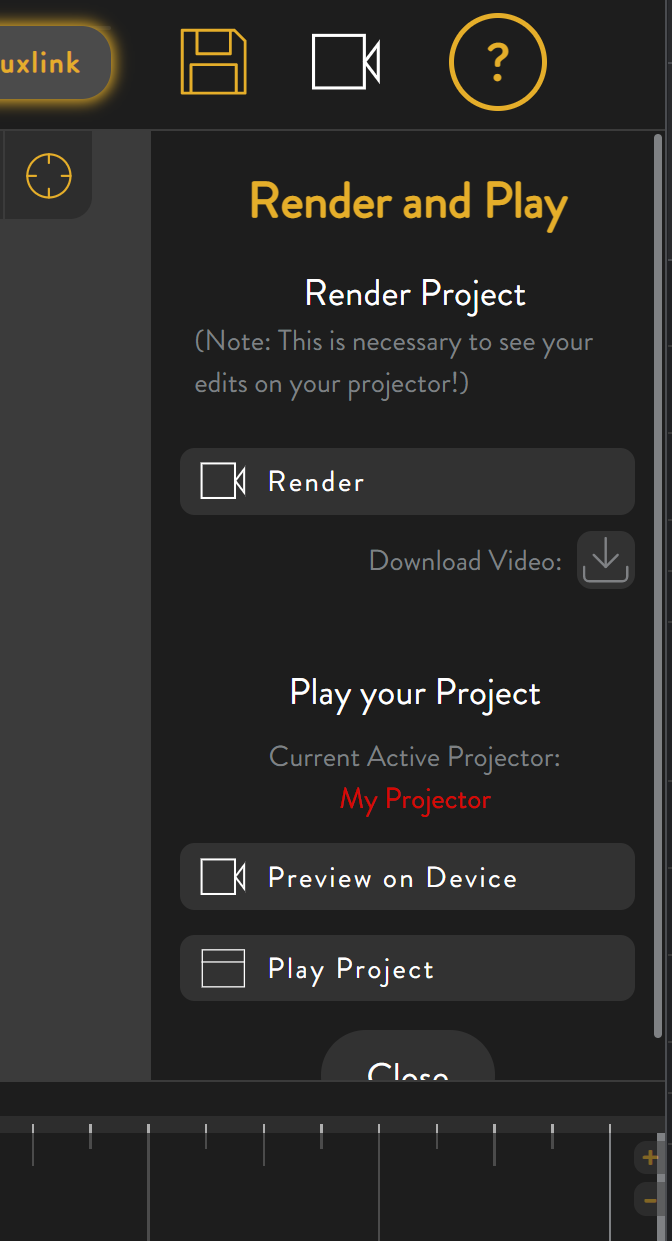
This will open the render overlay. Simply click the 'RENDER' button in this overlay.
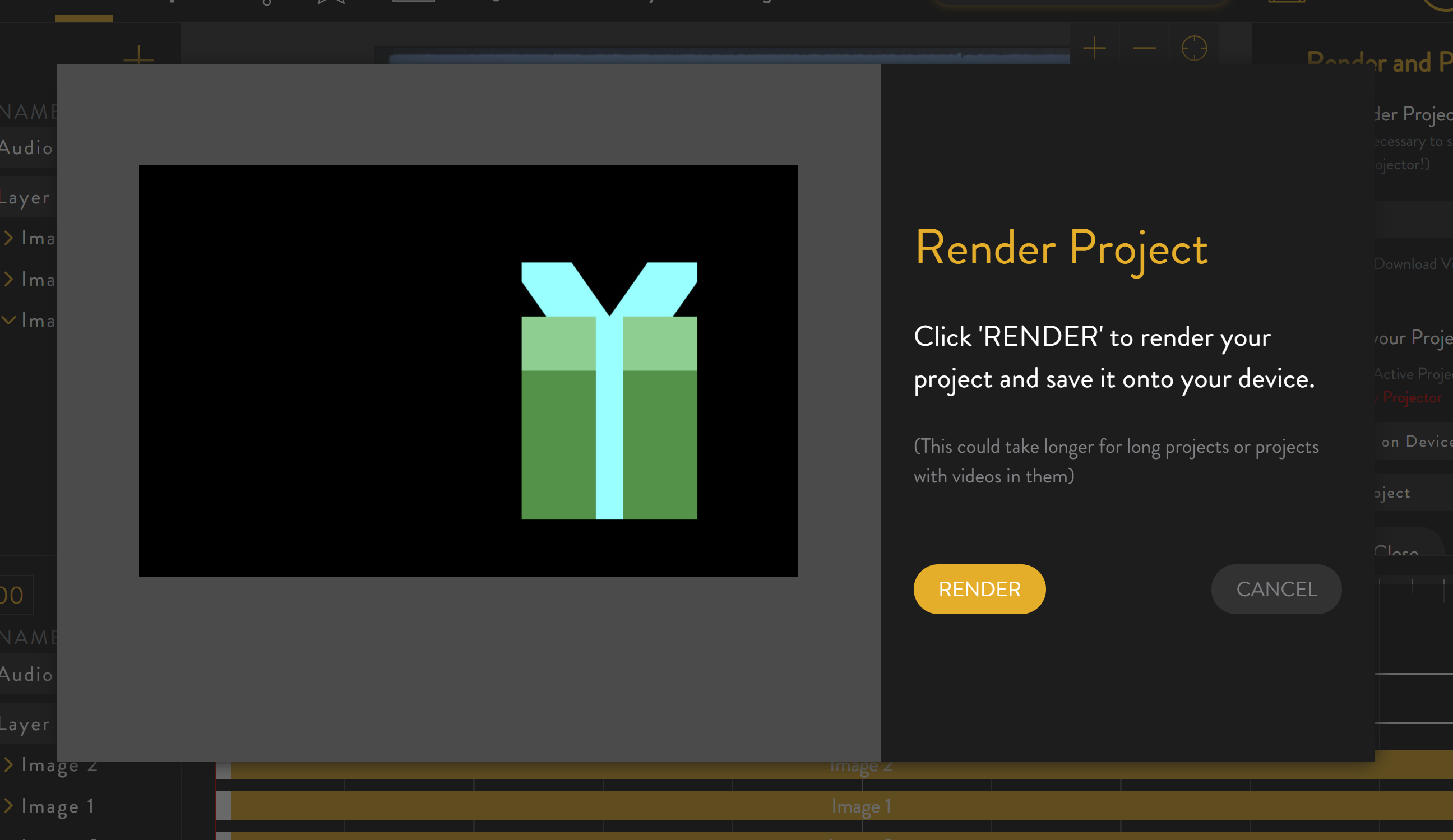
This will take a few moments, and the overlay will keep you informed of progress.
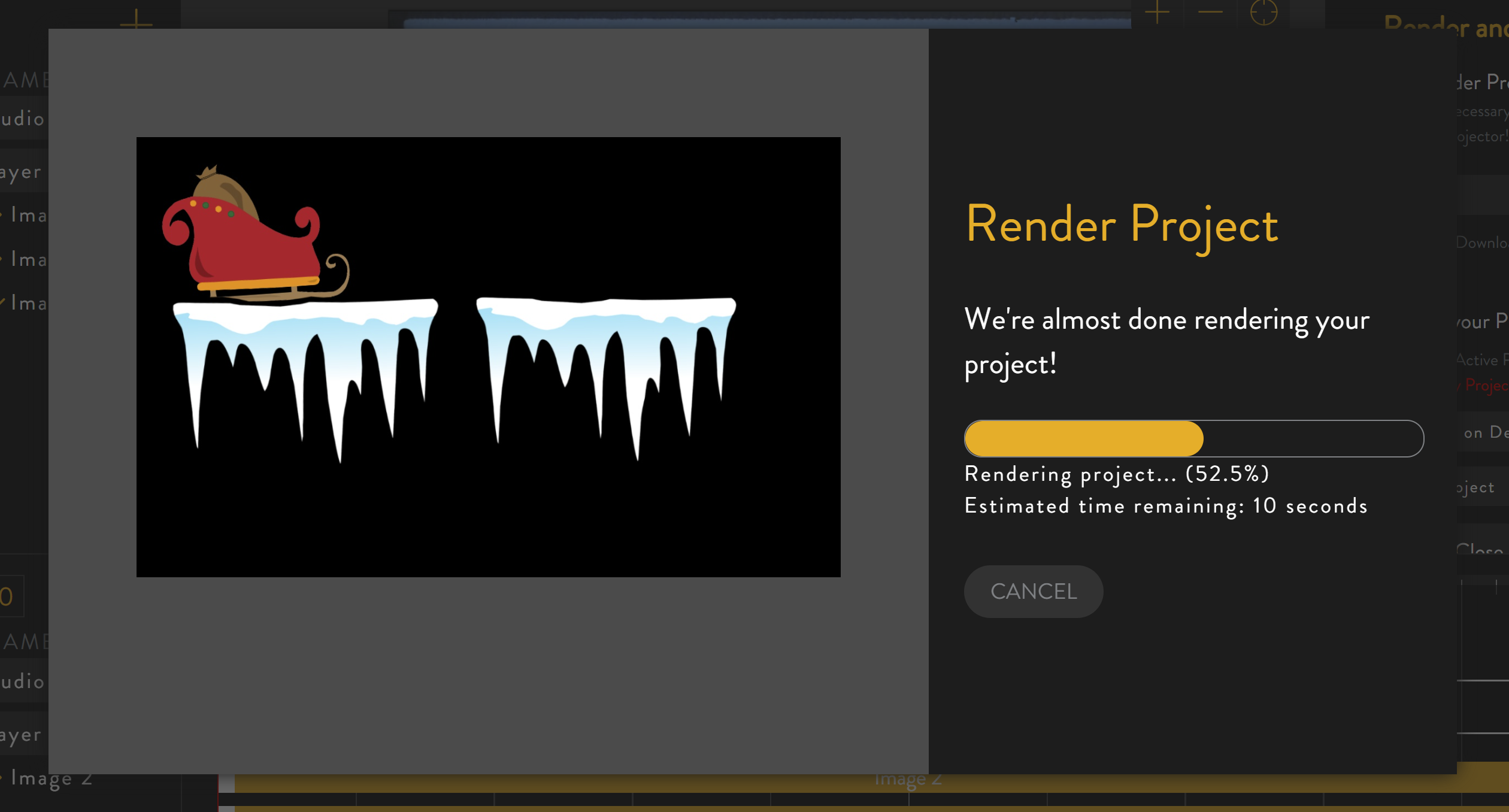
When it is done, click 'DONE'.

Now that the project has been rendered the projector can play it. There are two ways to cause the projector to play a project:
A) Preview the project immediately
B) Schedule the project to play at a specified time in the future
For this tutorial we will simply 'preview' the project. To do this, click 'Preview on Device' in the render/preview toolbar.

This will open the preview overlay. Simply click 'PREVIEW' to start the preview.
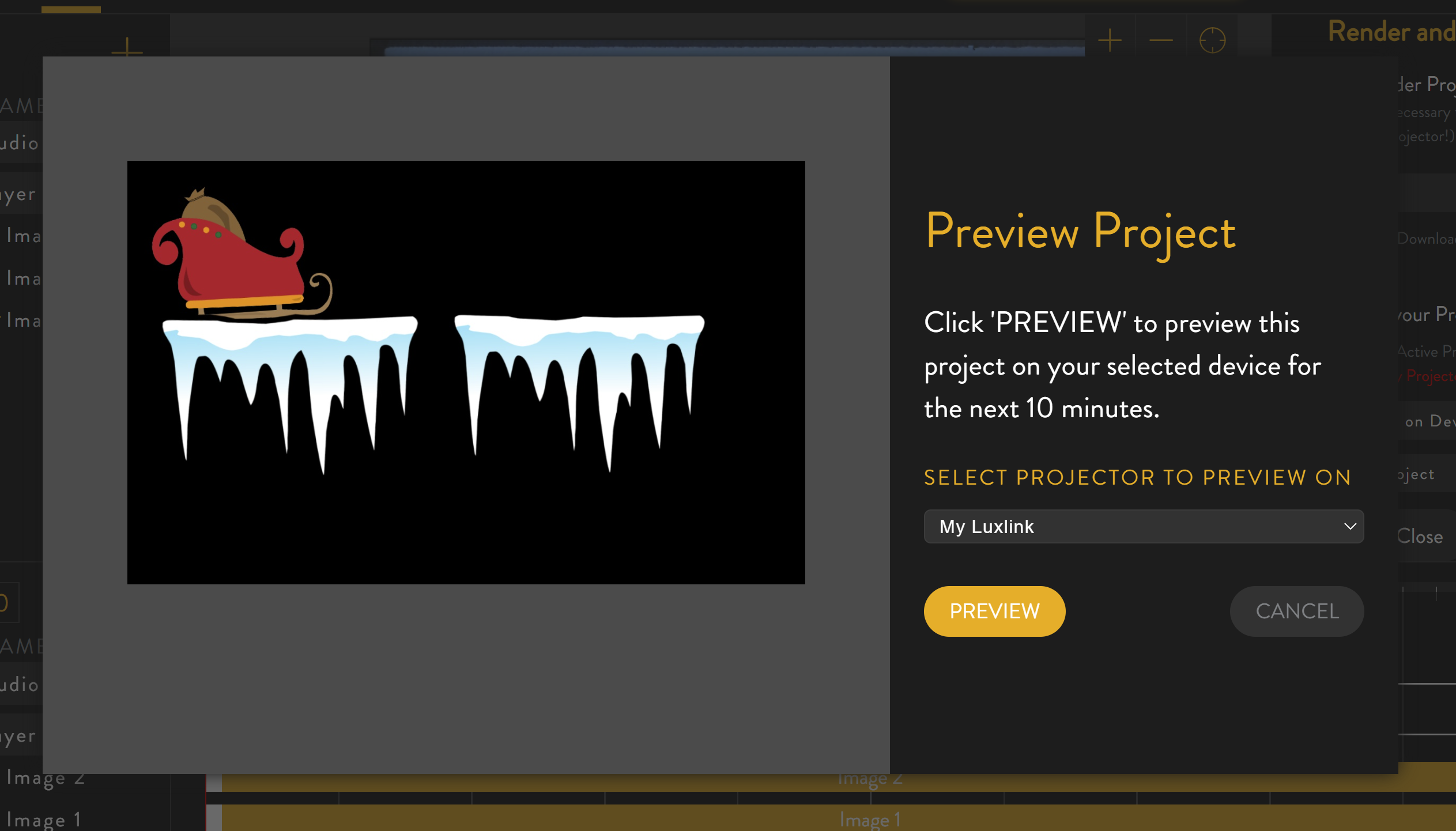
Then click 'DONE' to close the overlay. The project will play on loop for the next 10 minutes.

At this point, your LuxLink projector should start projecting your project. Here's how my project looked:

If you've been following along on your own then congratulations! You've successfully performed your first projection mapping.
